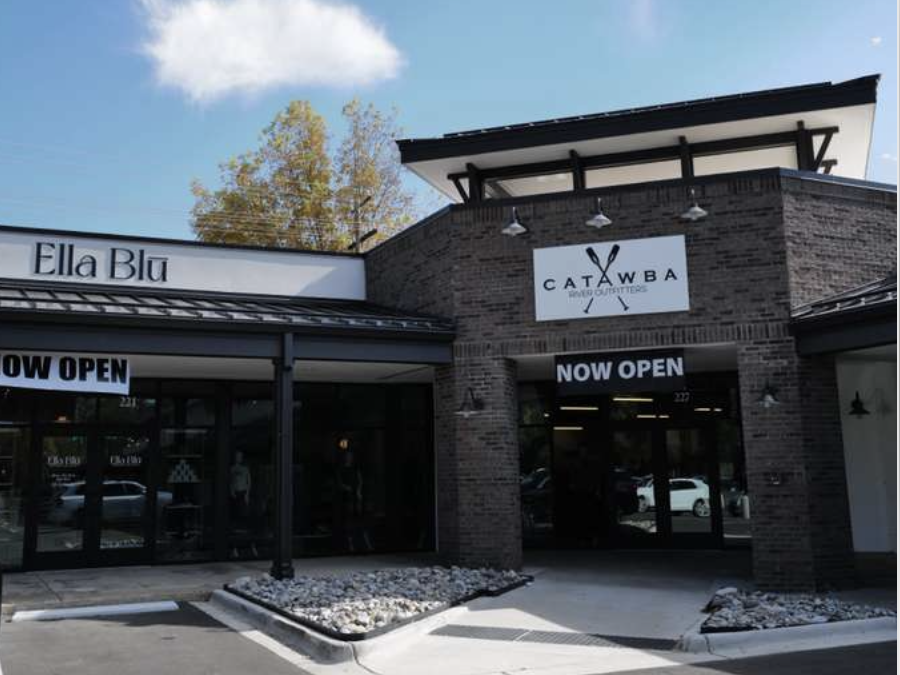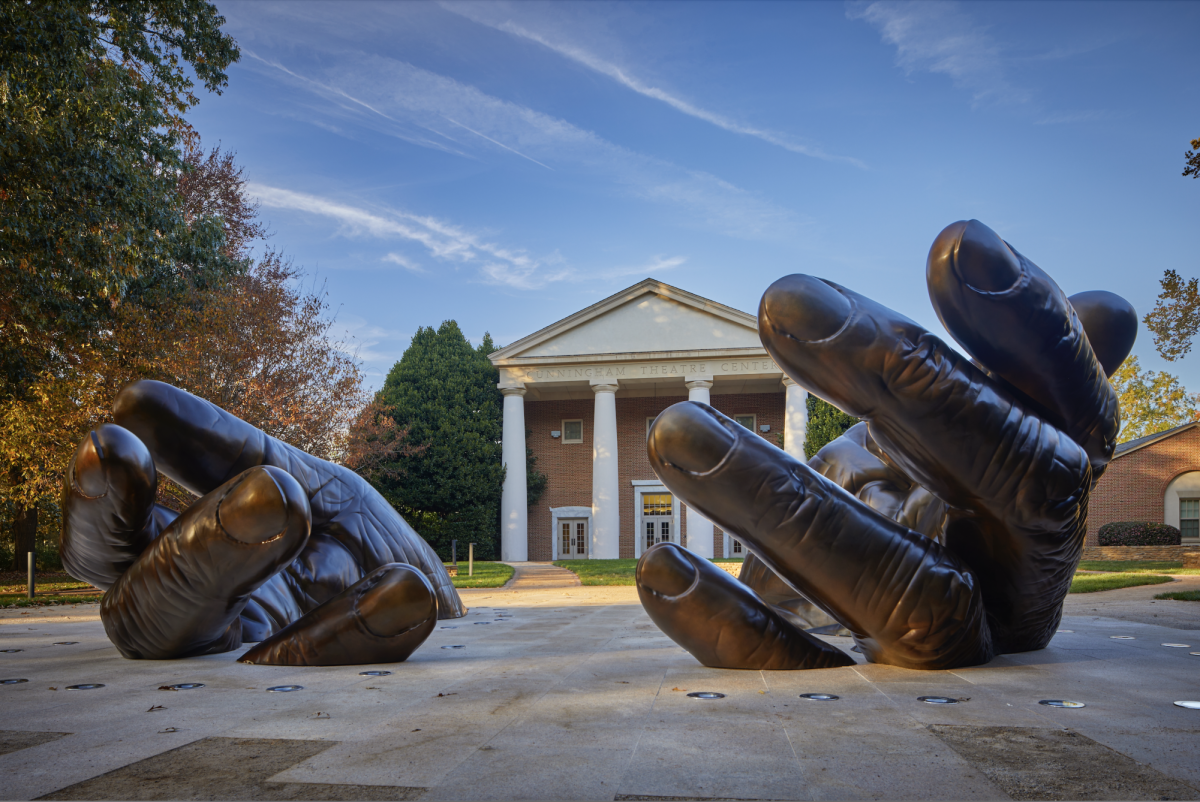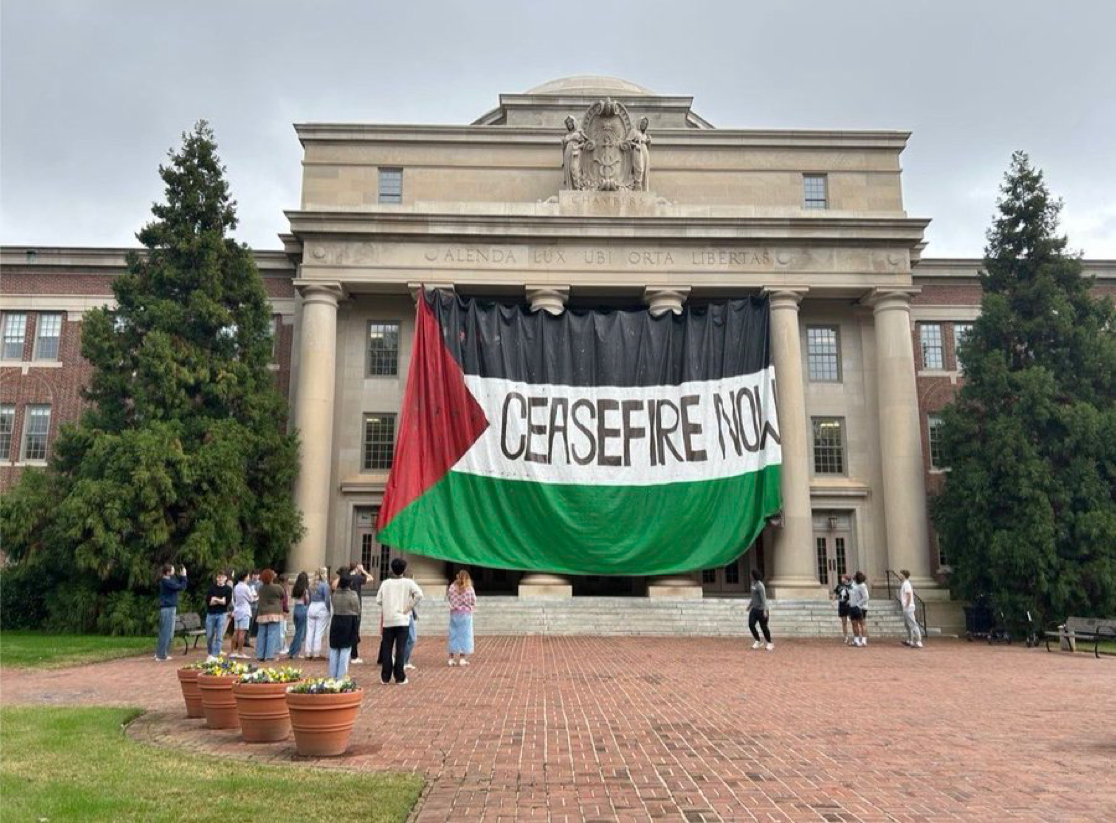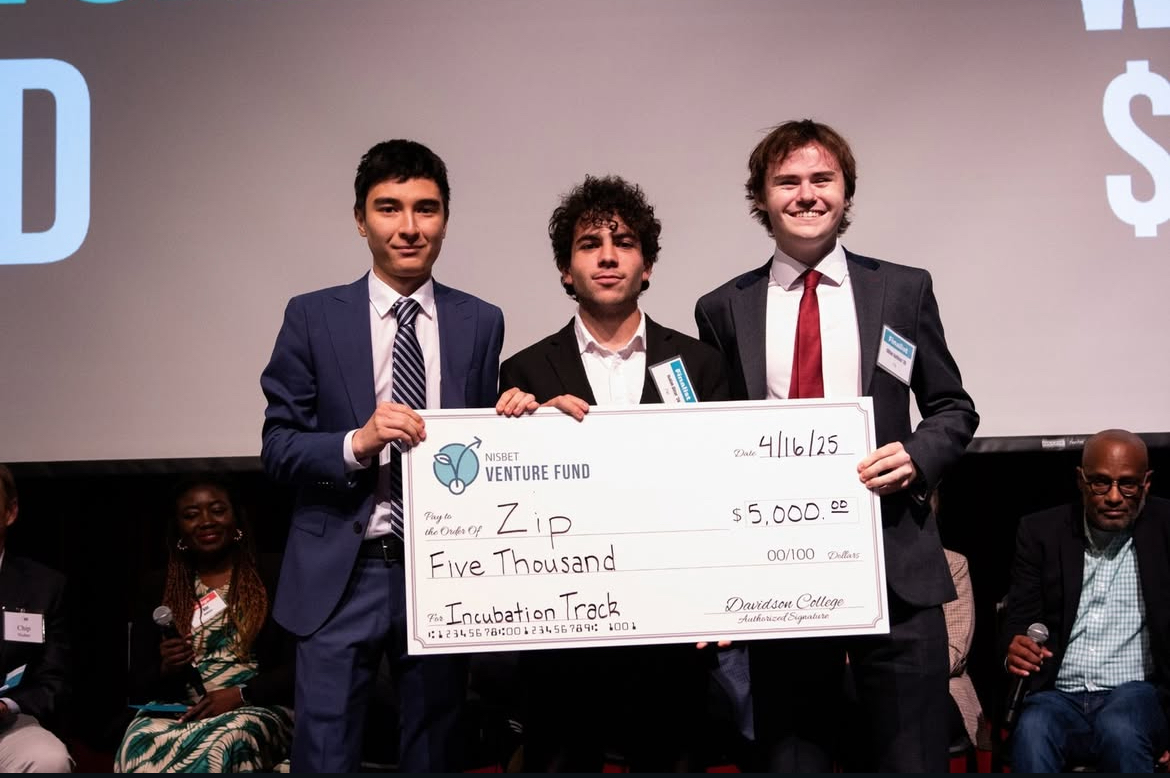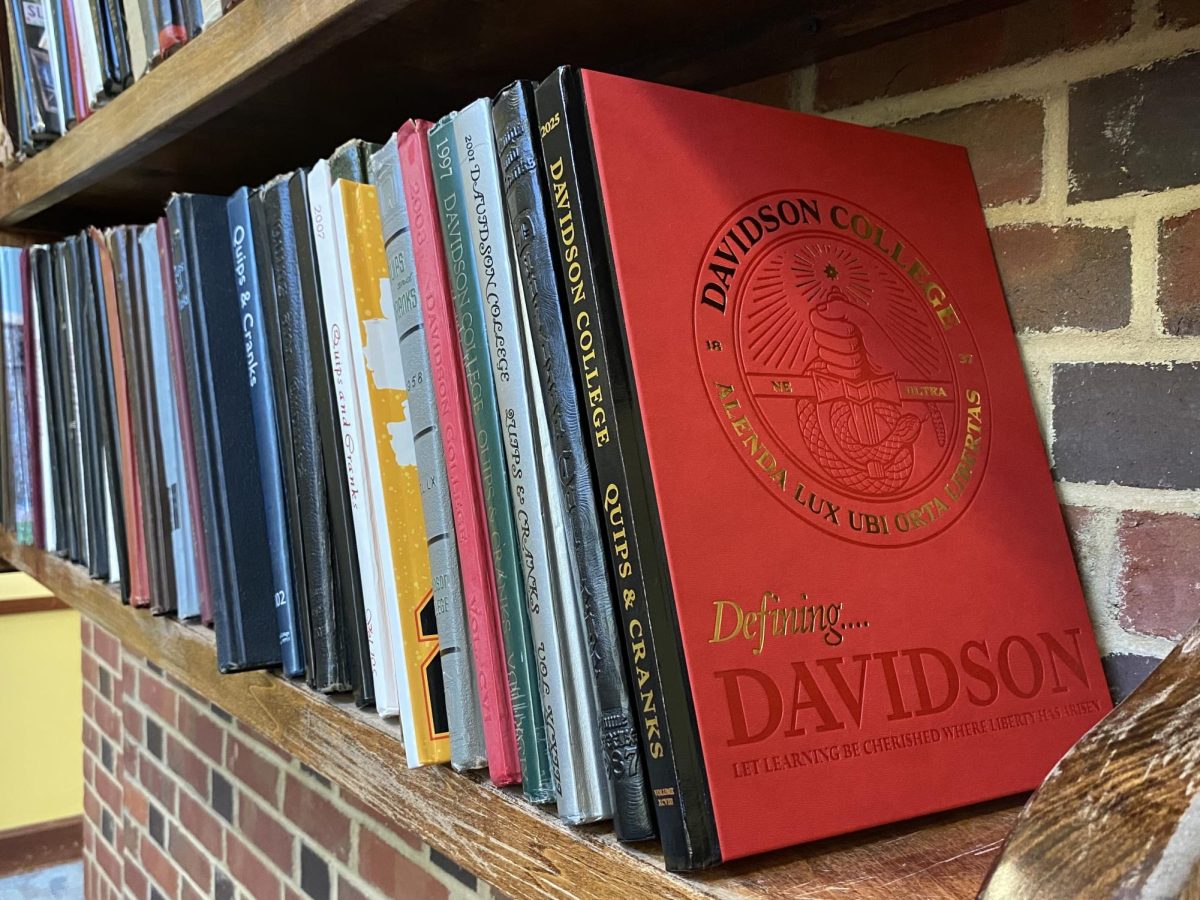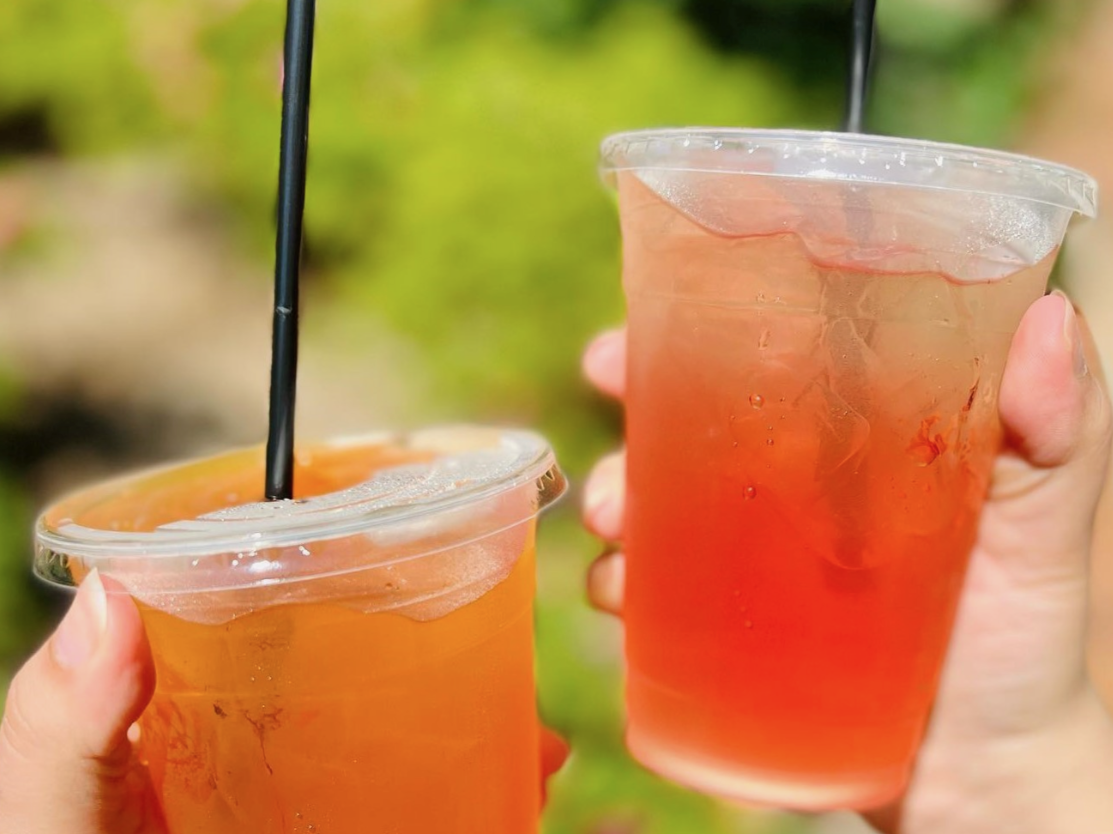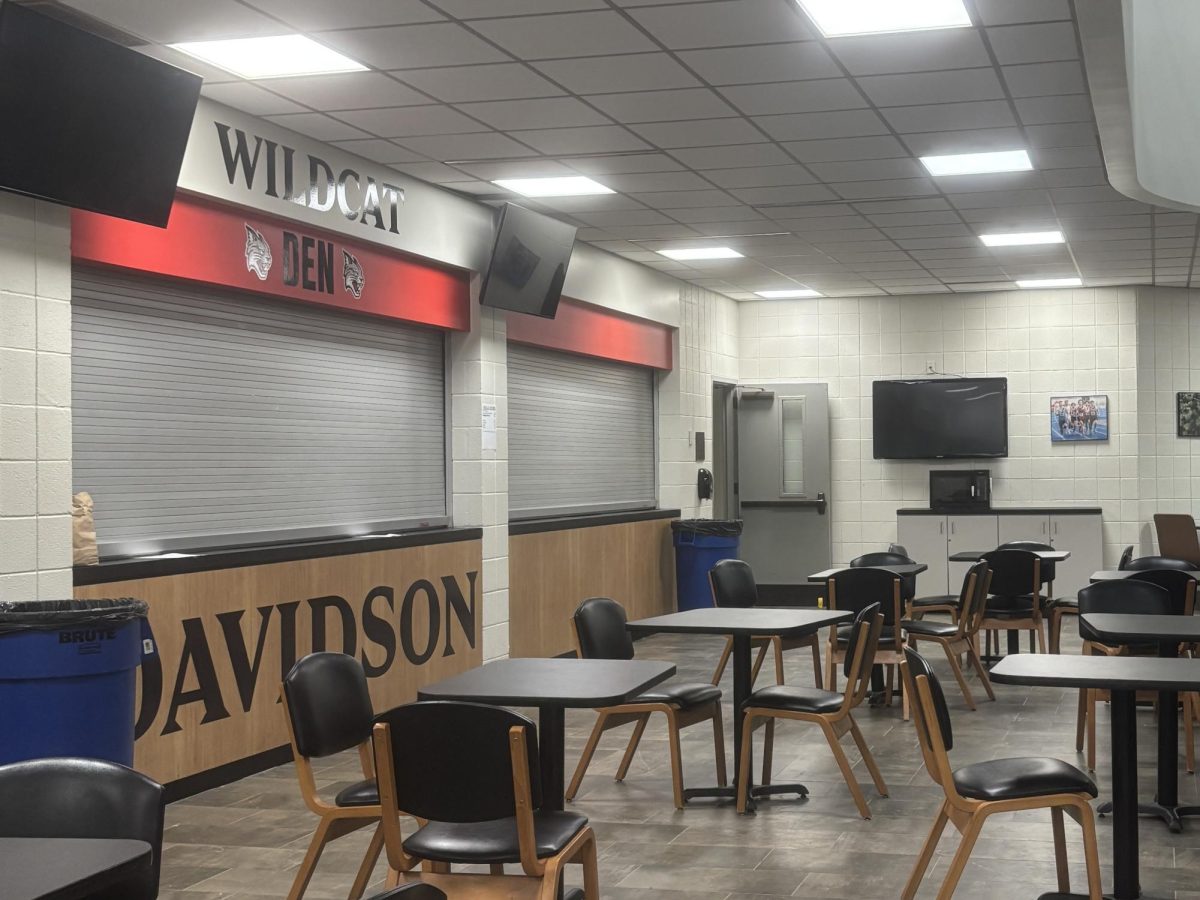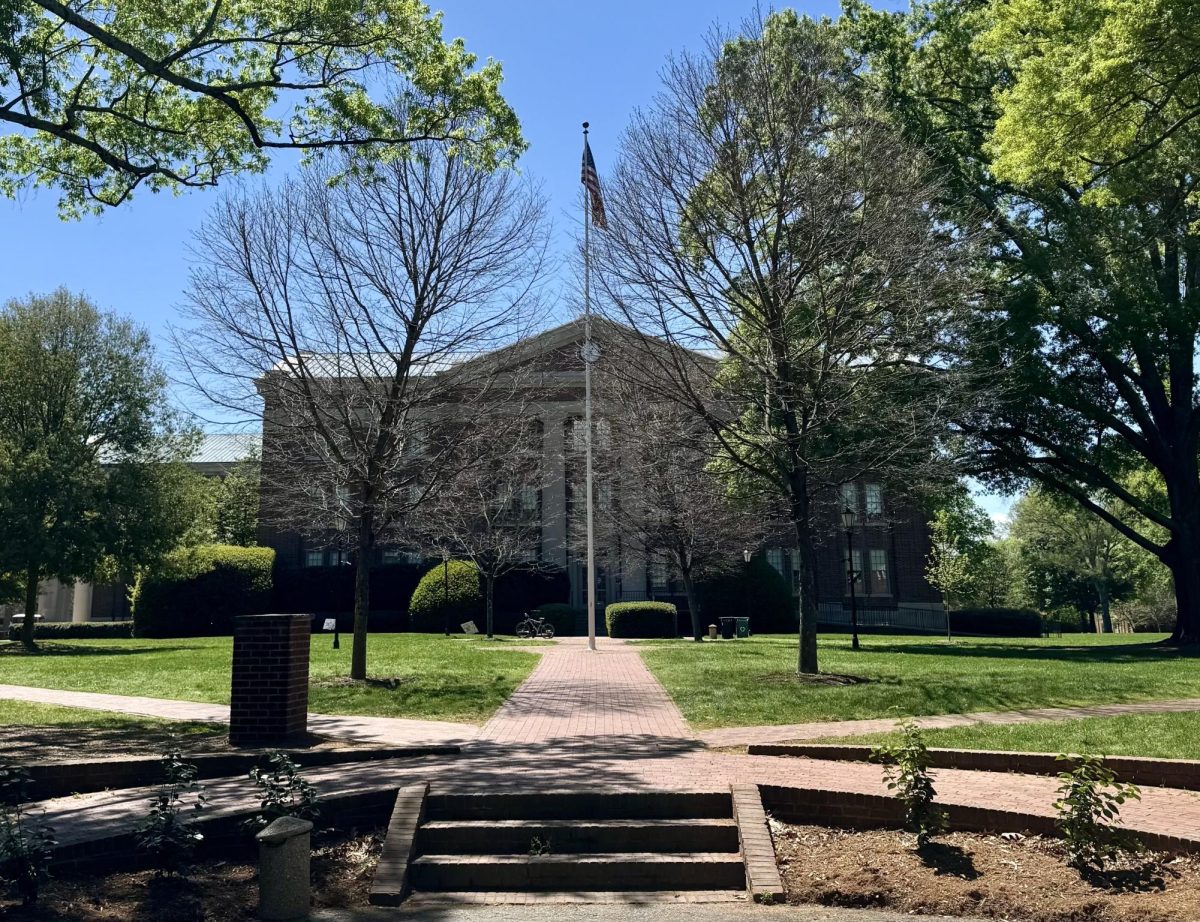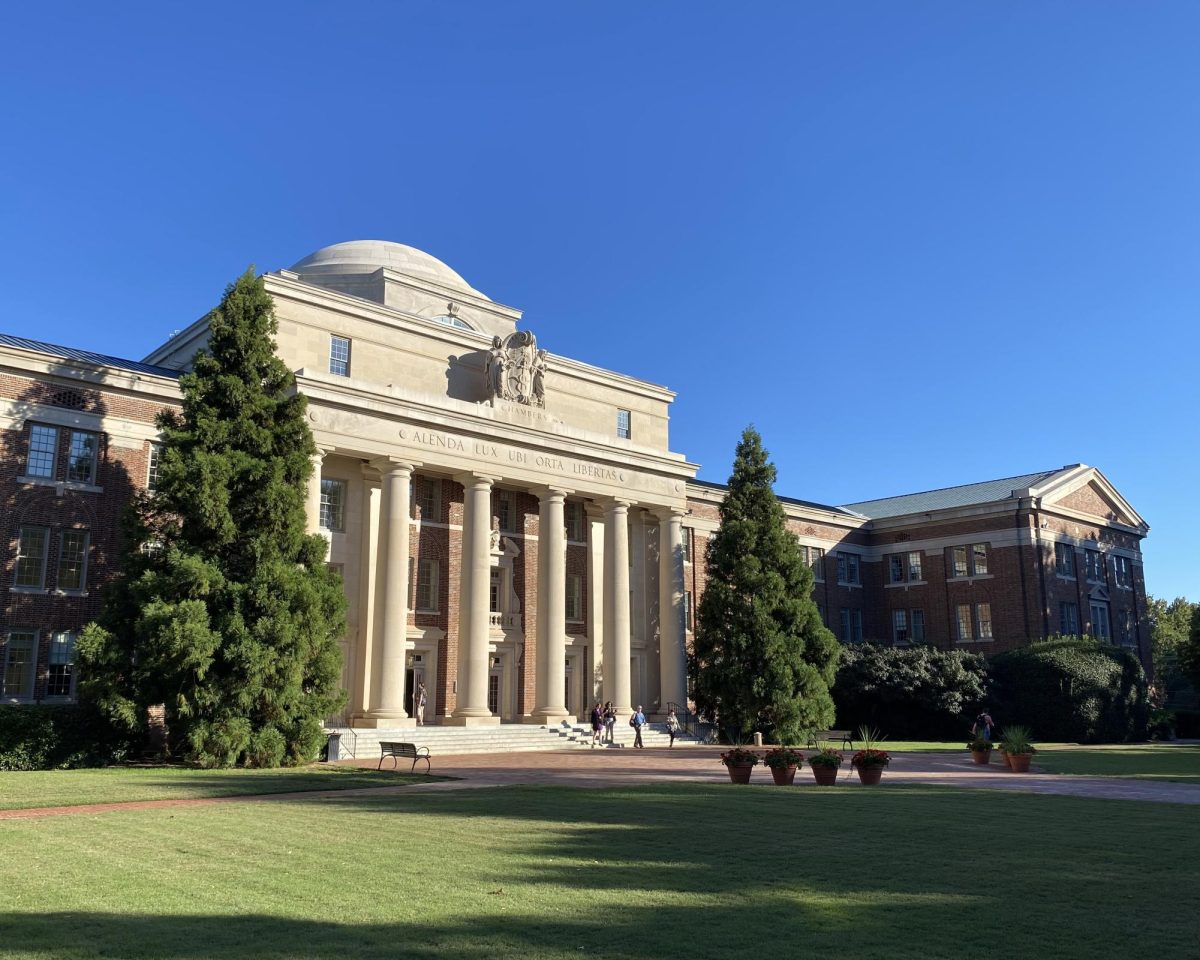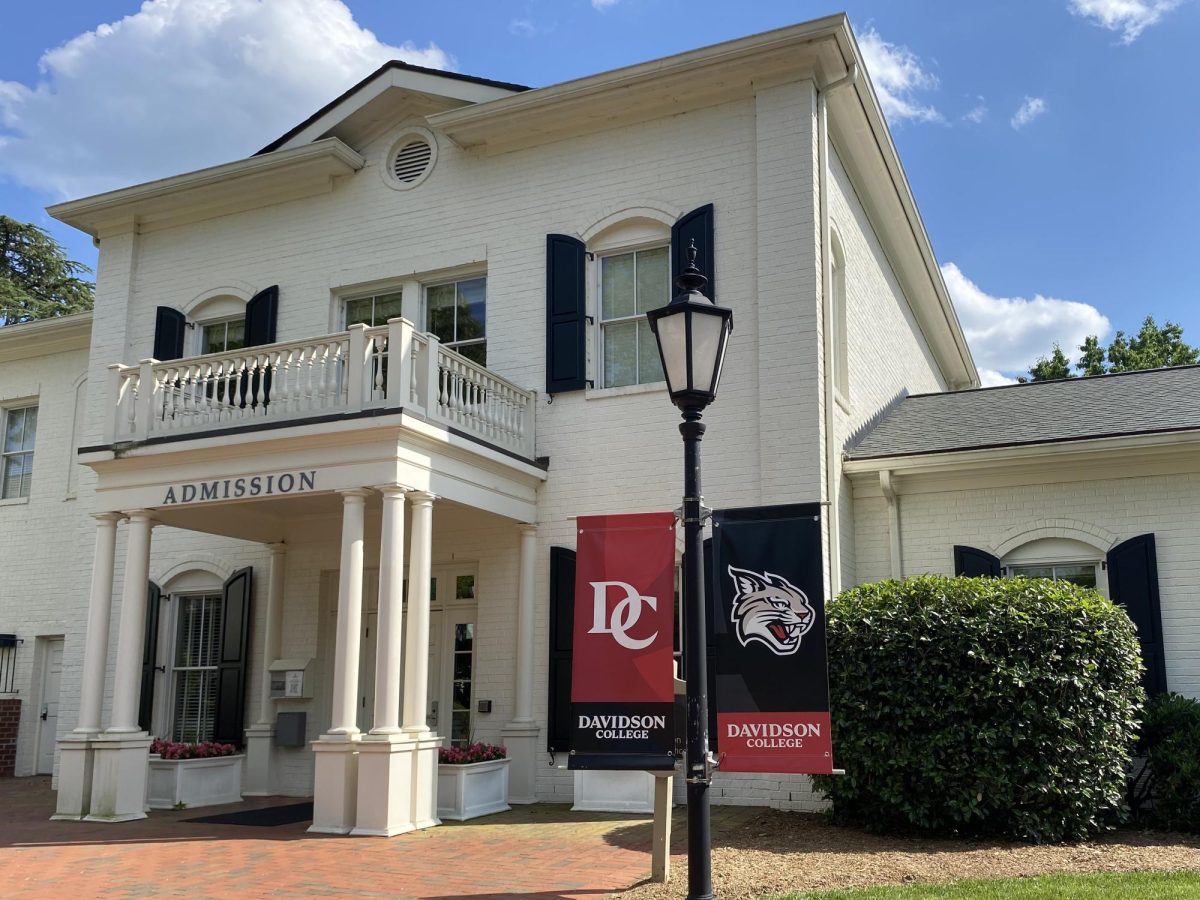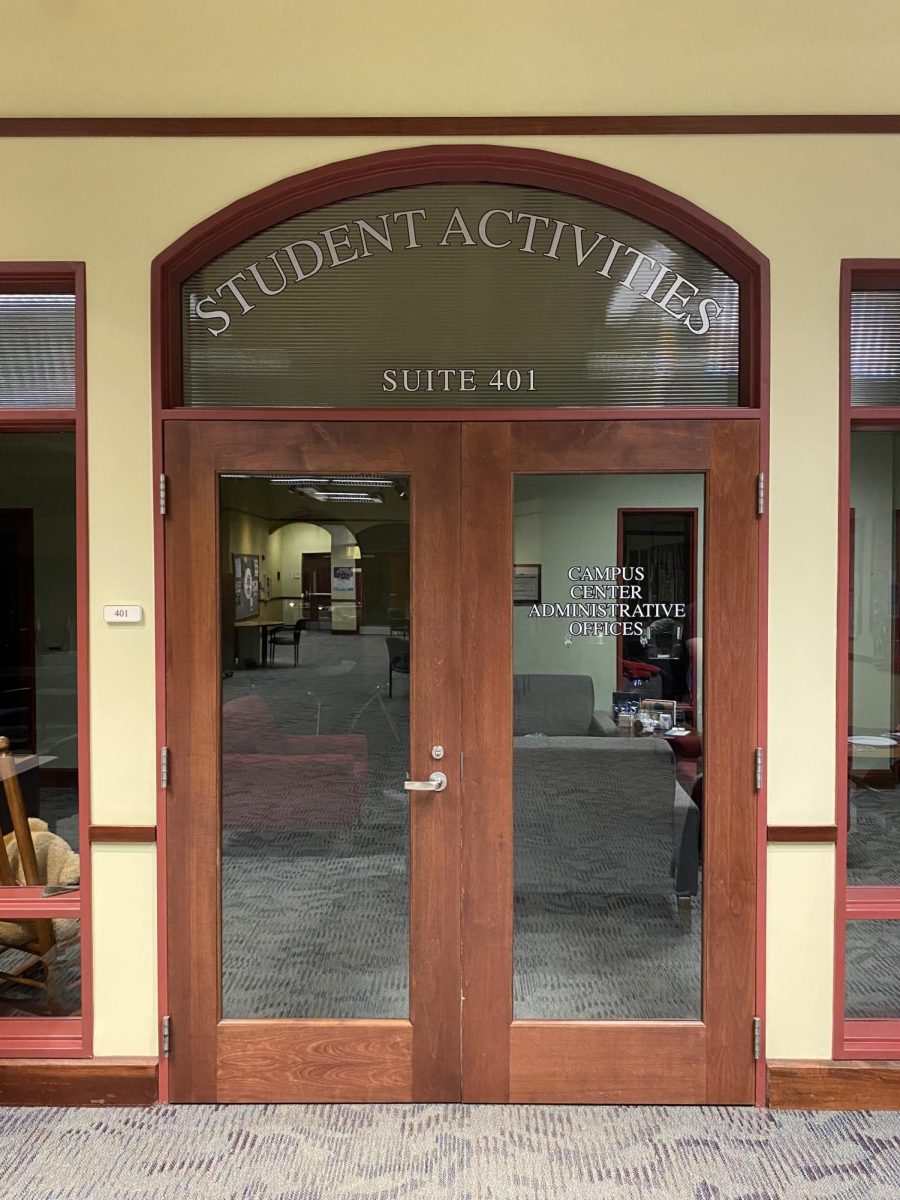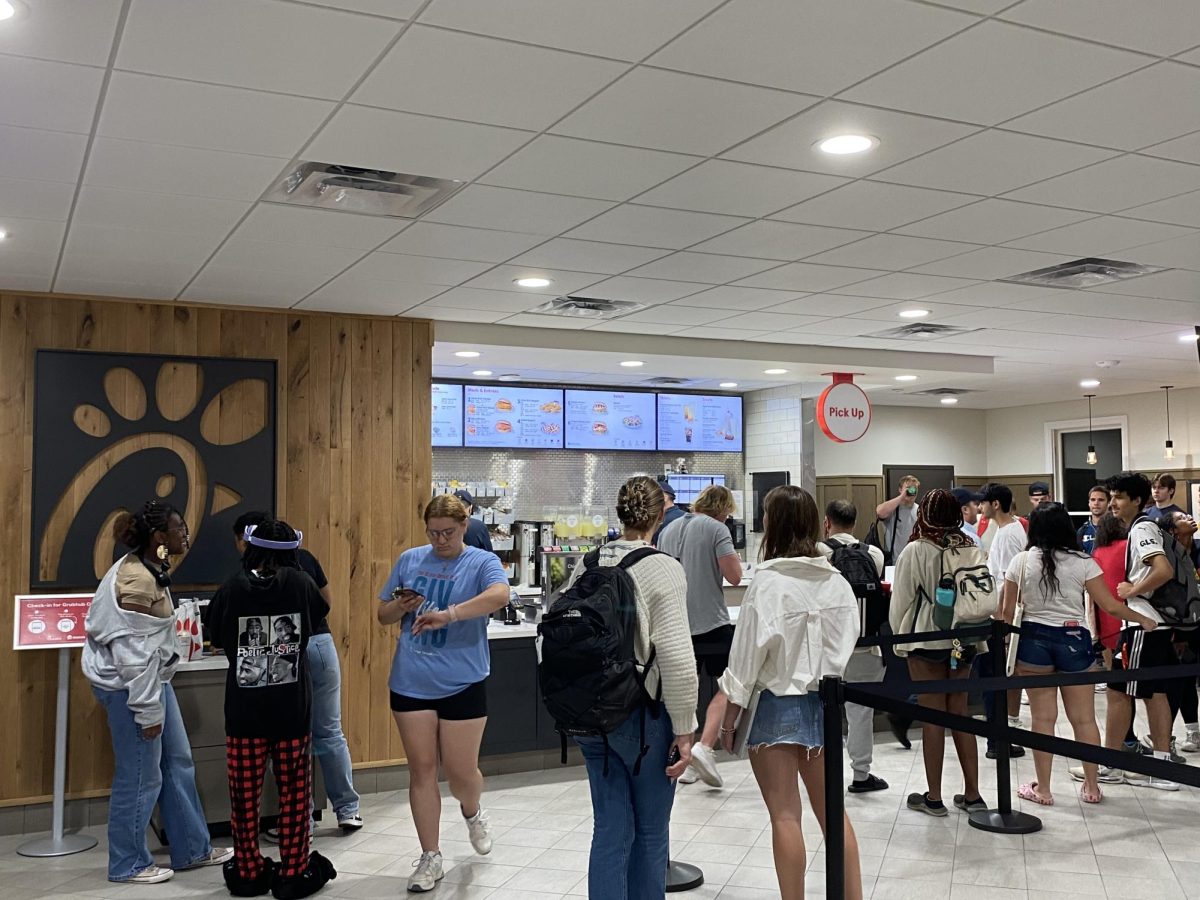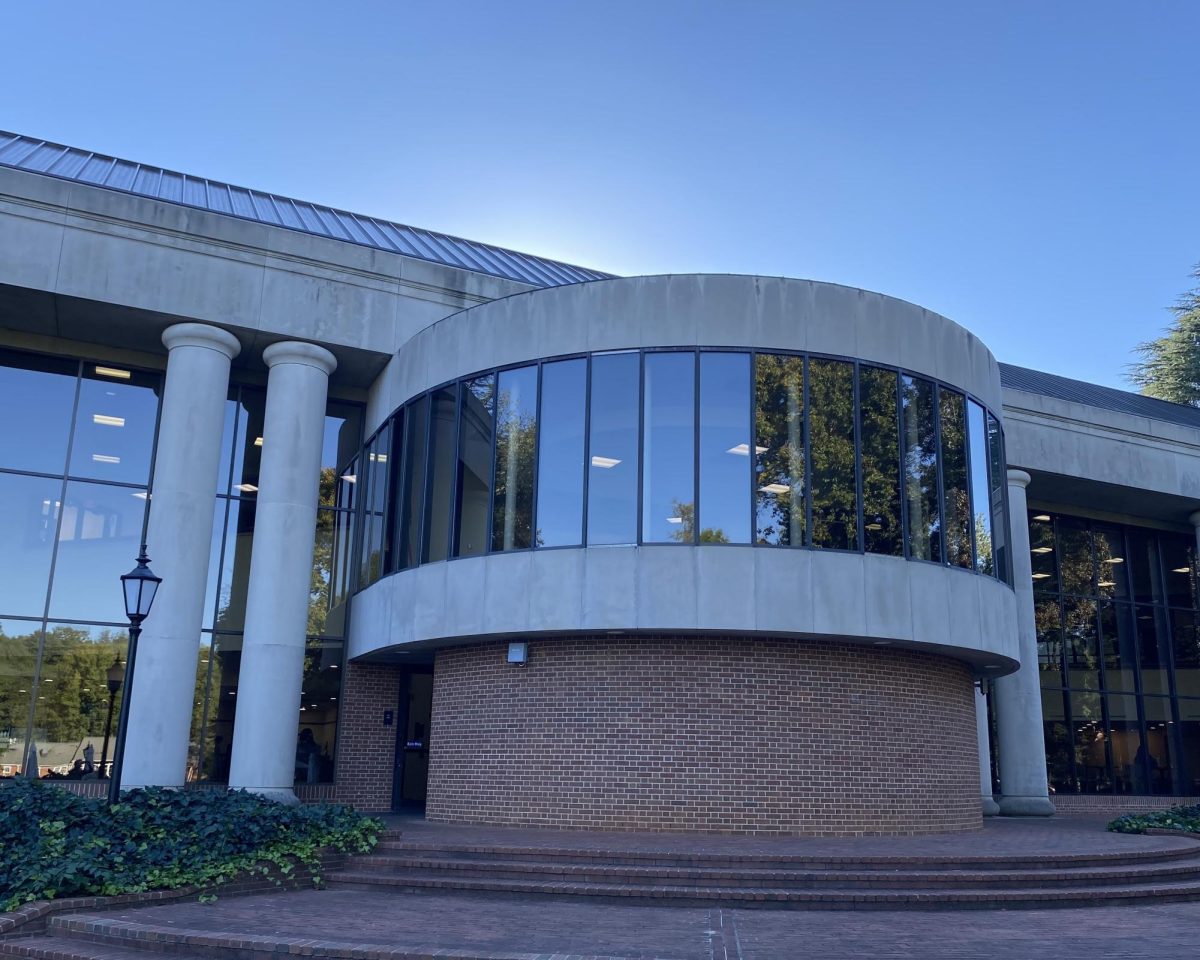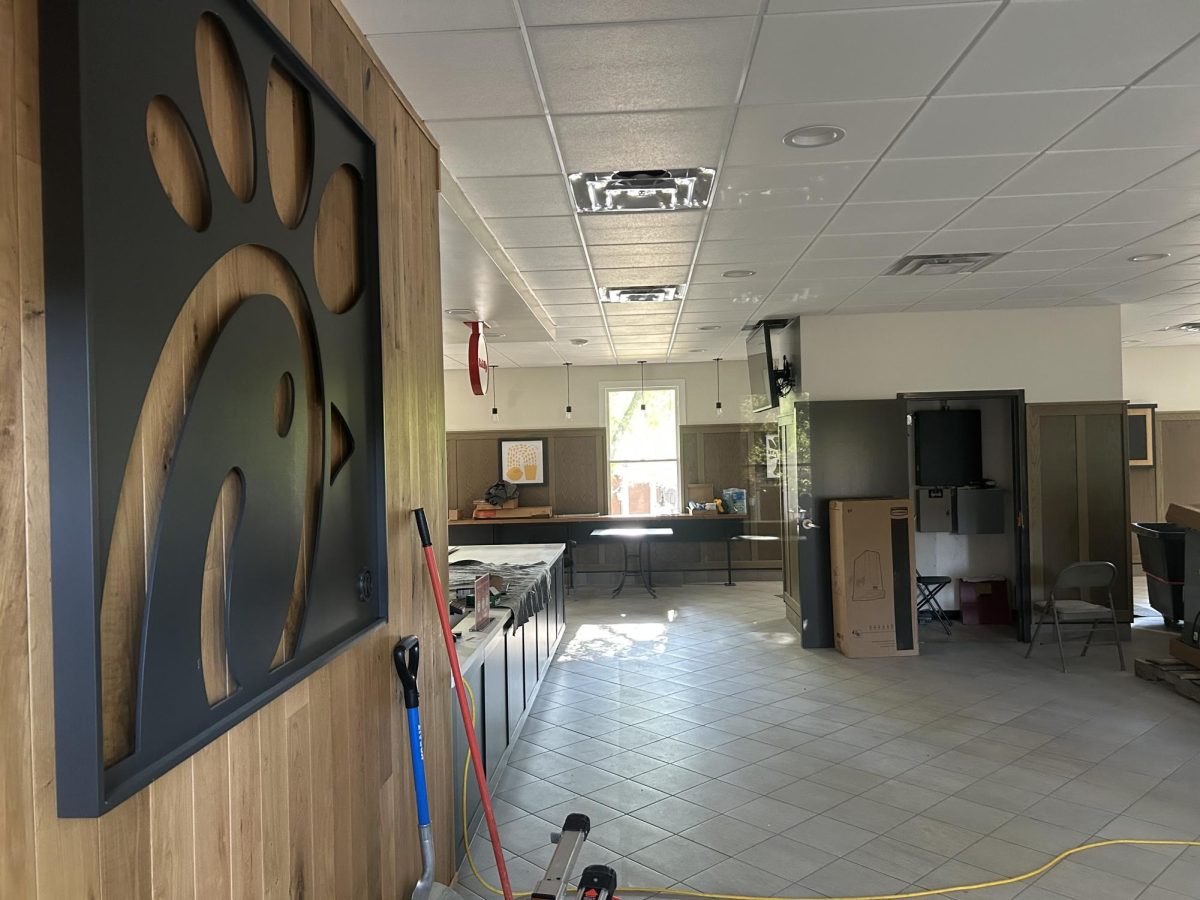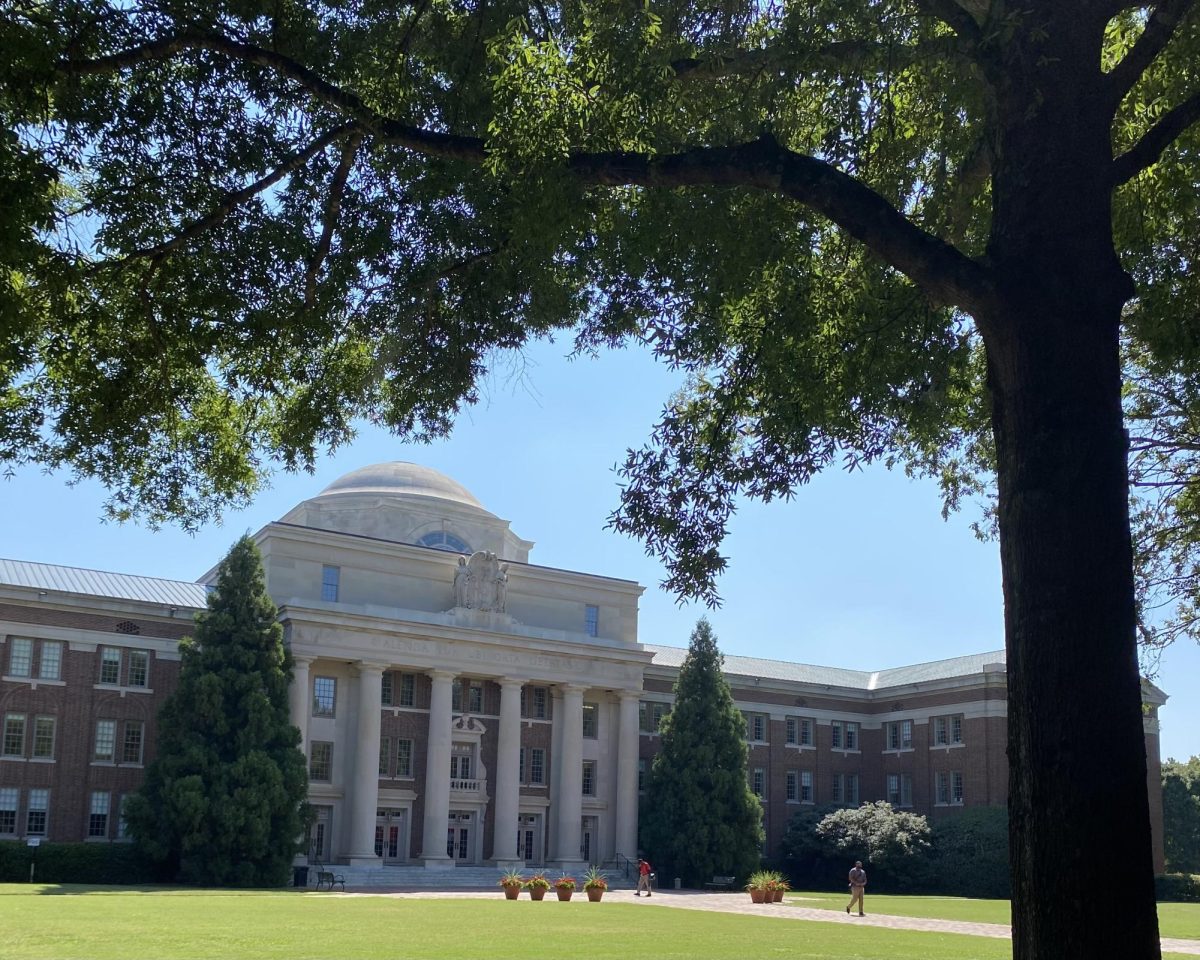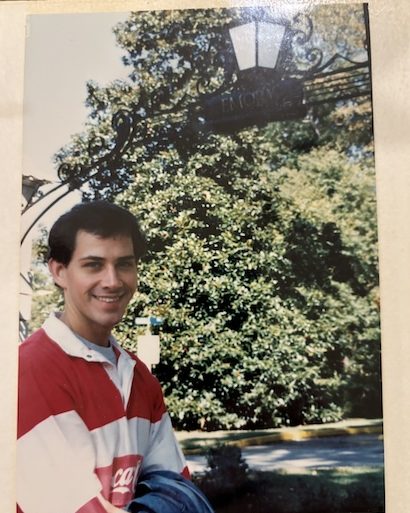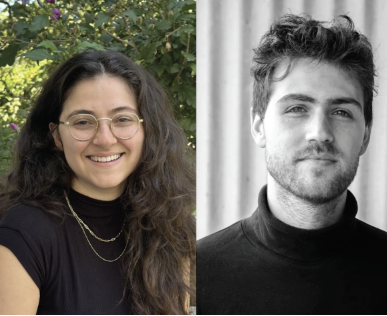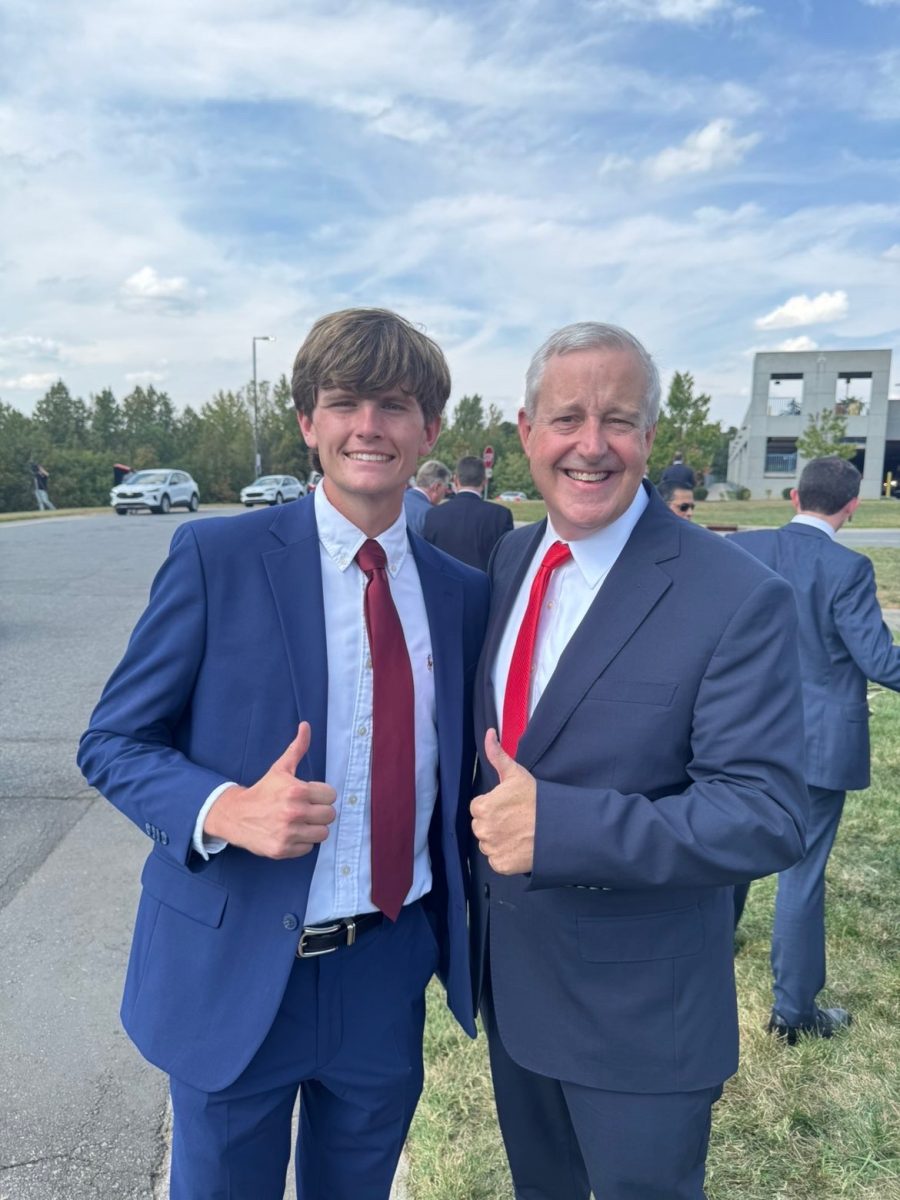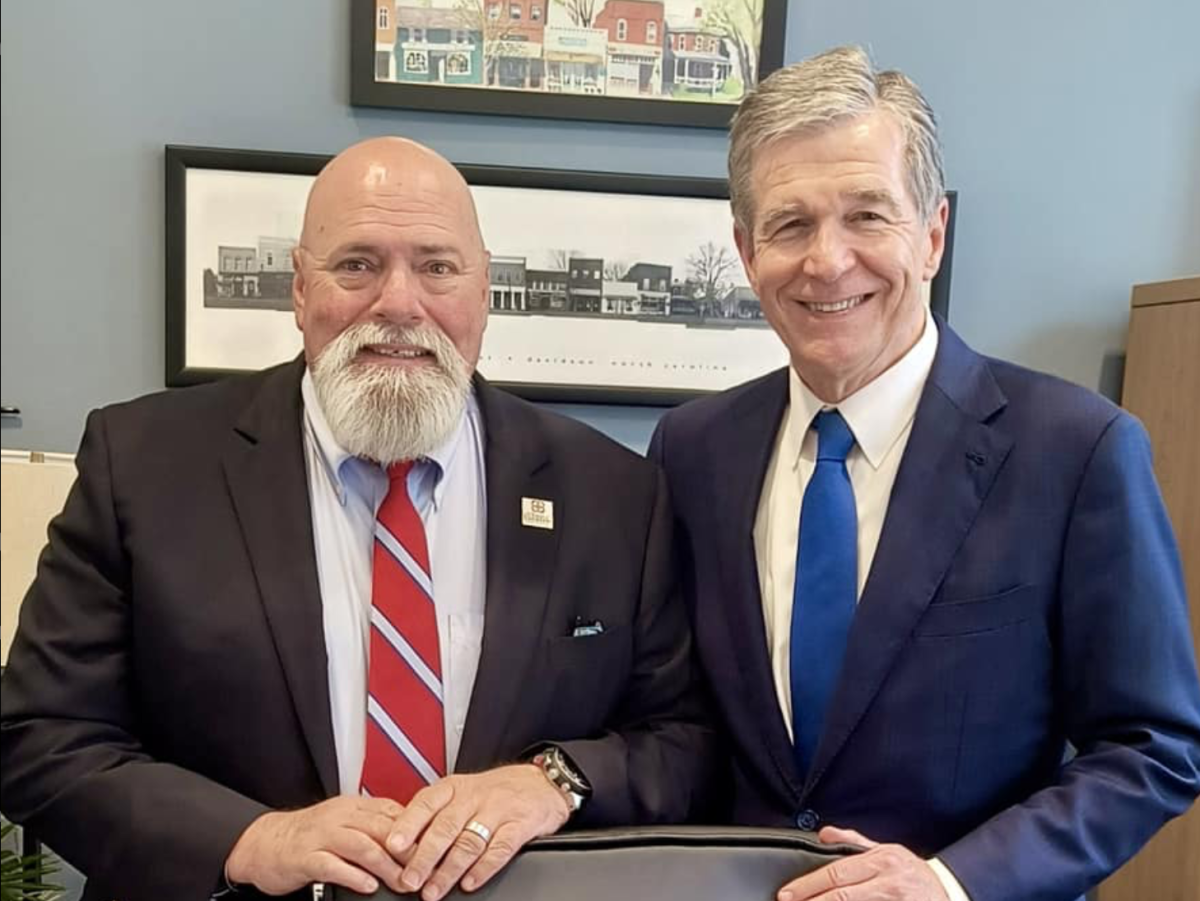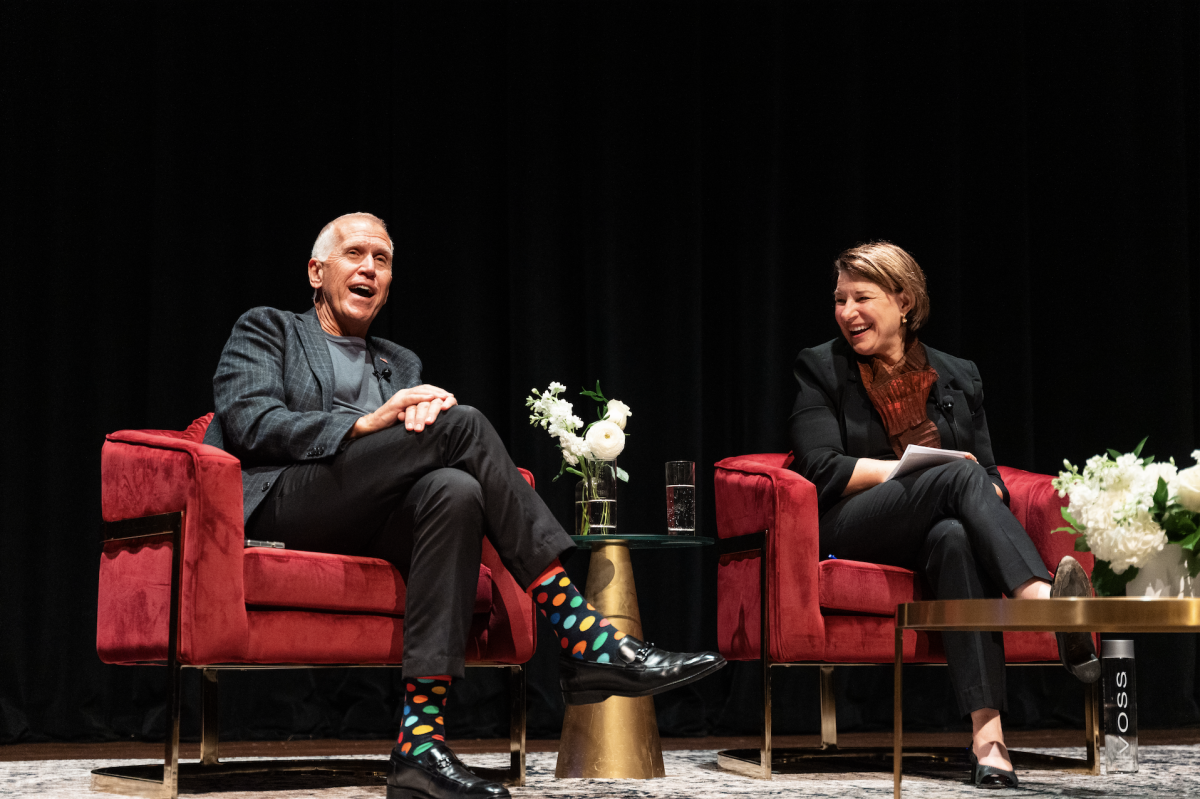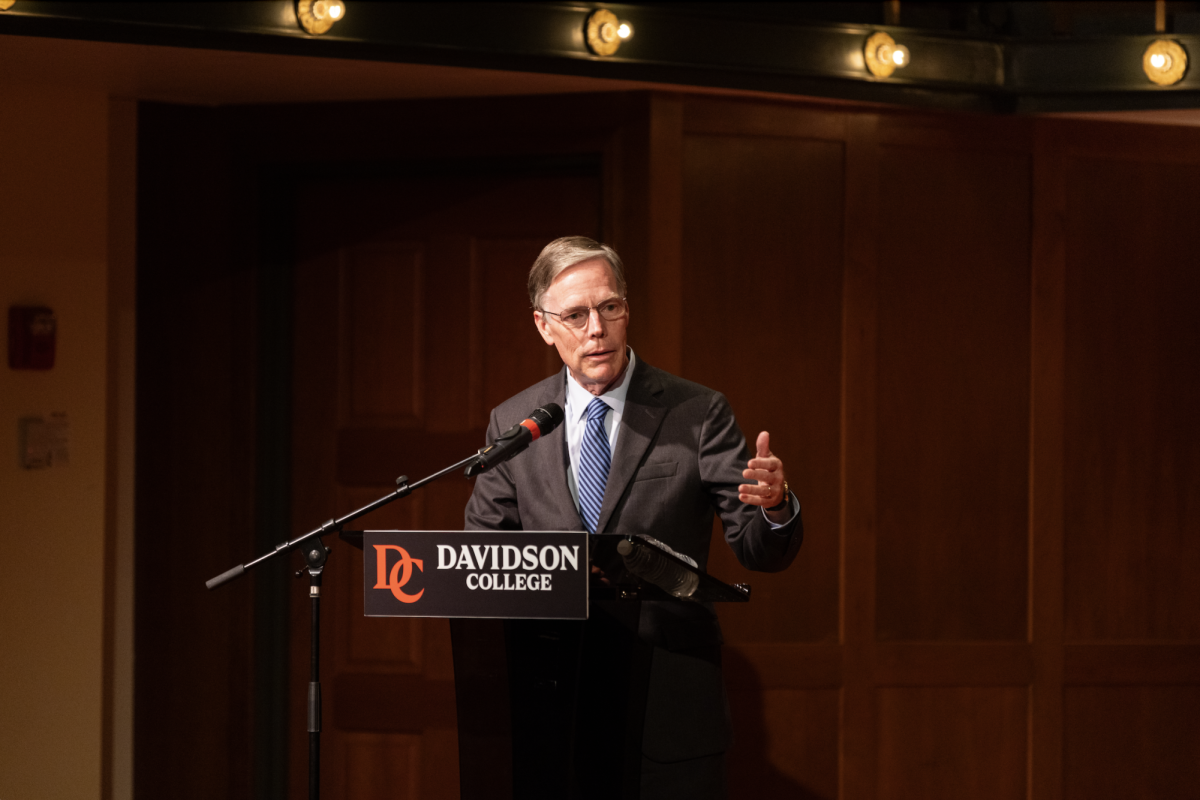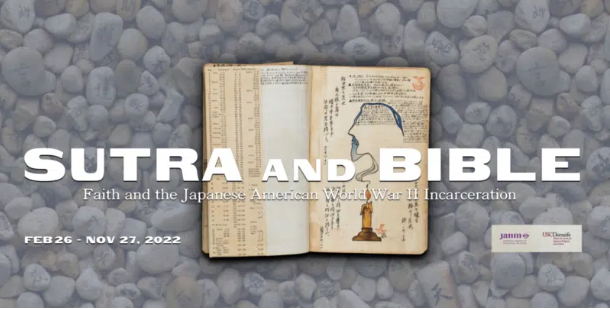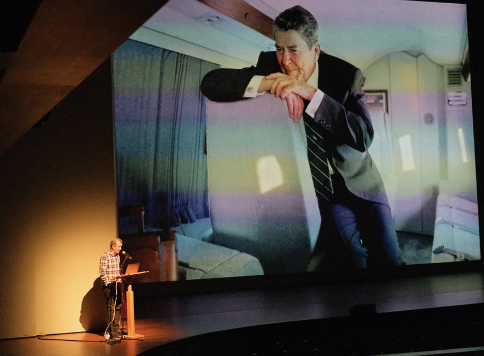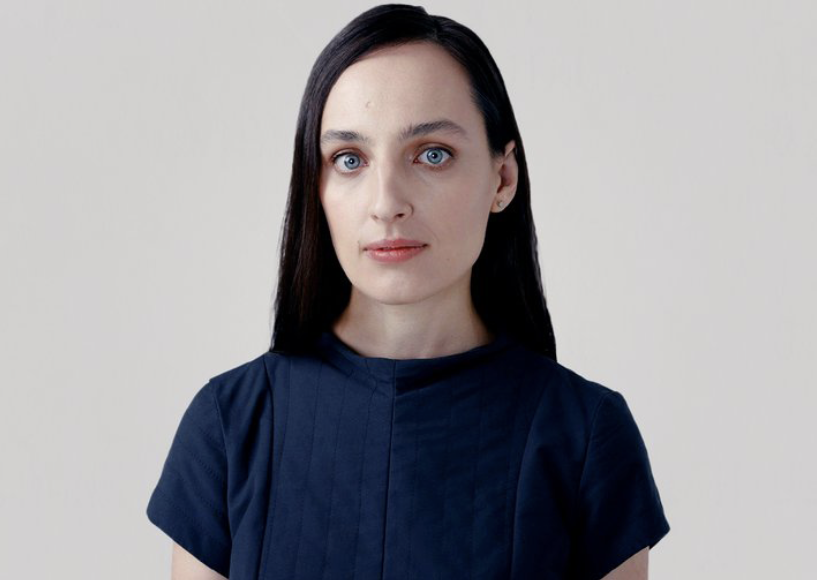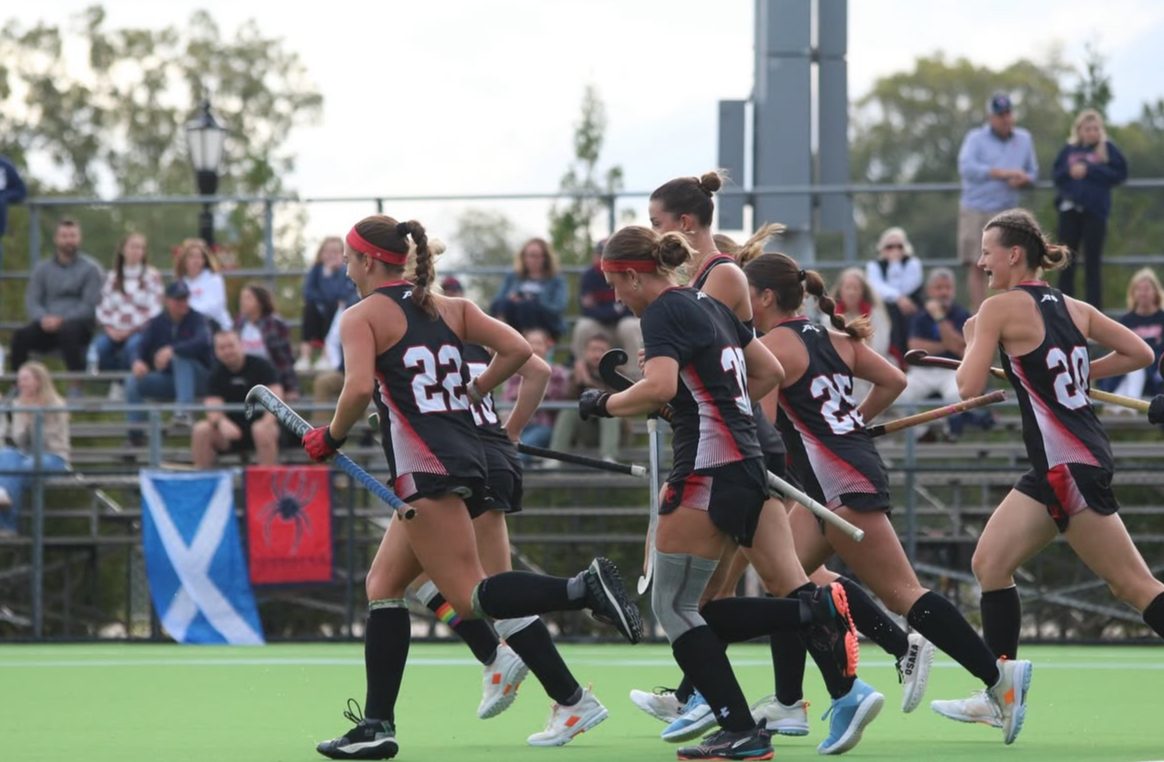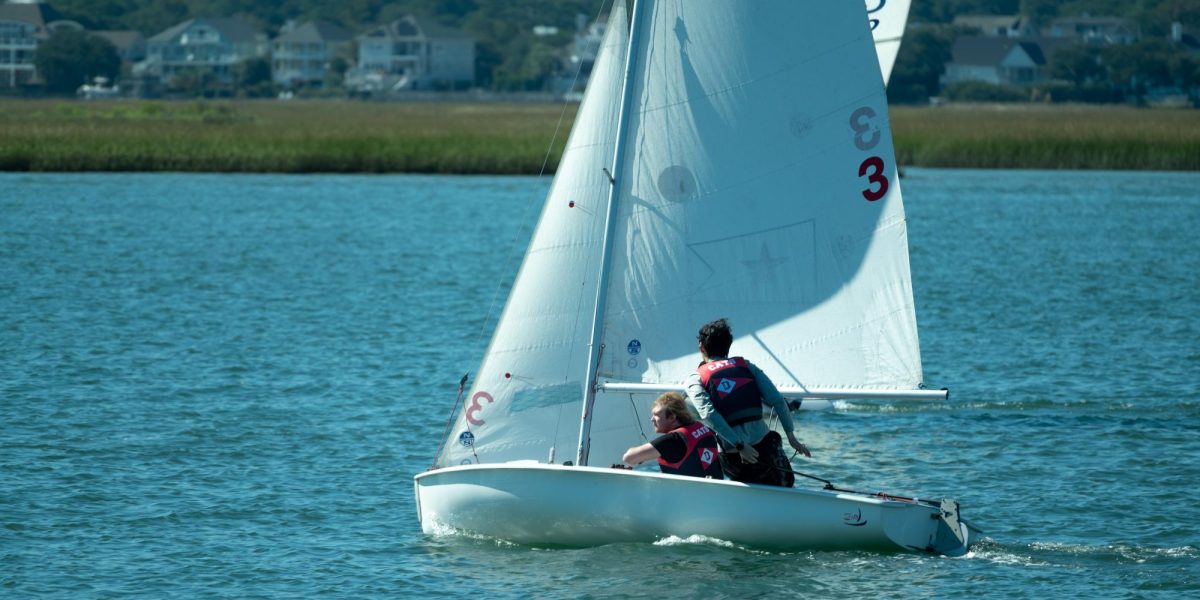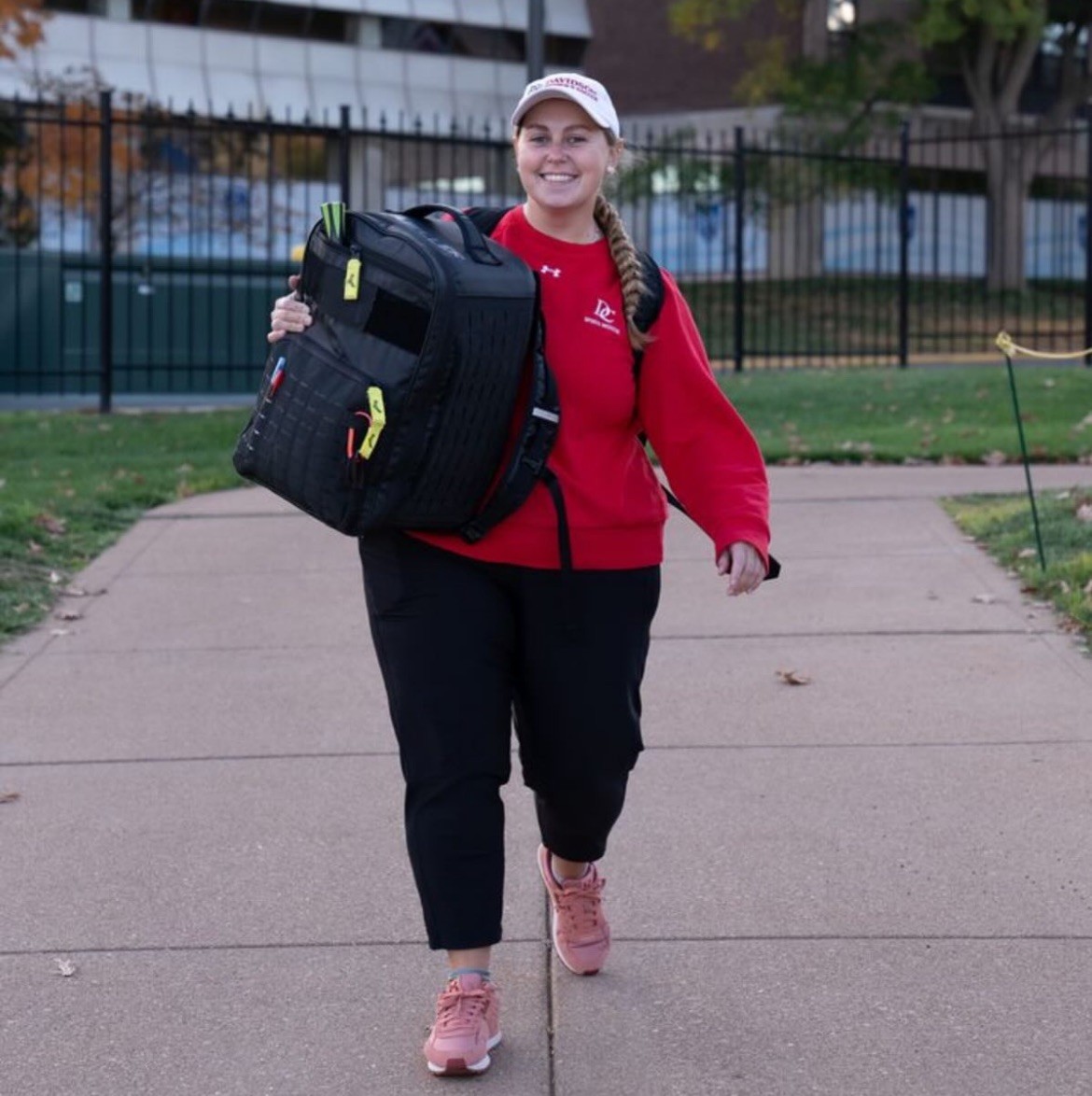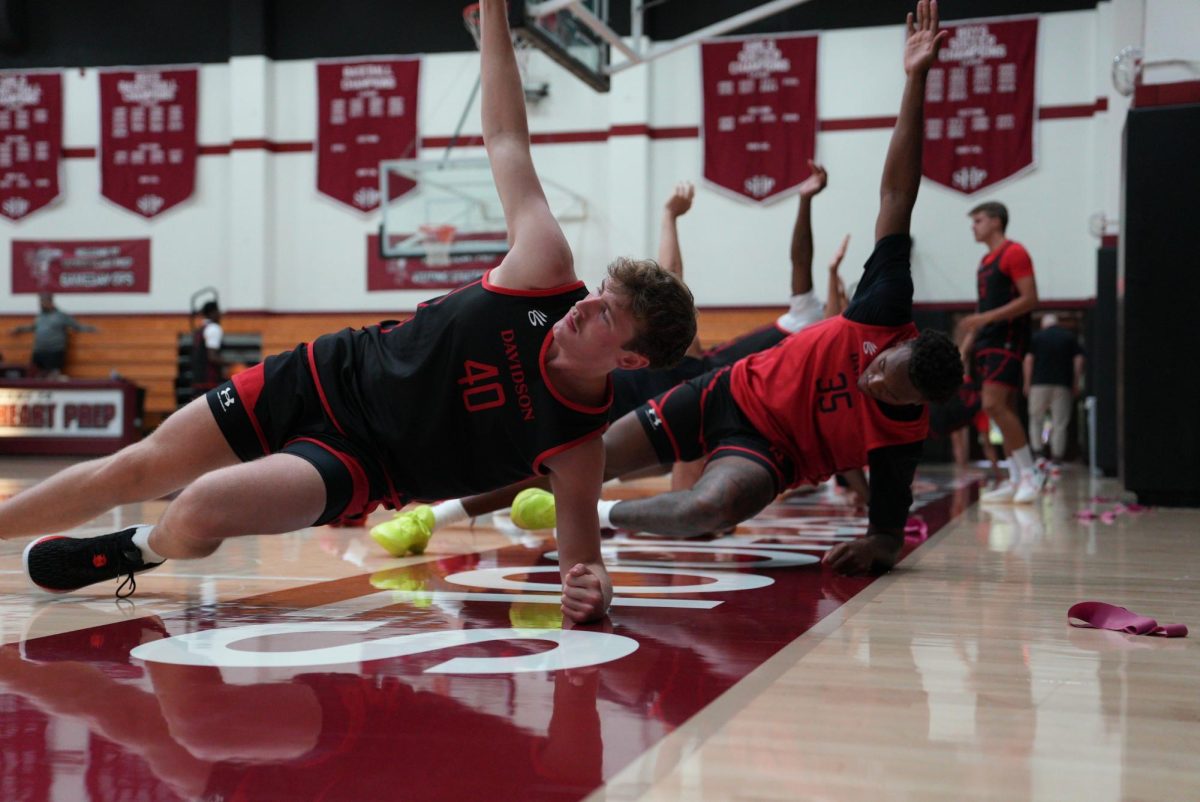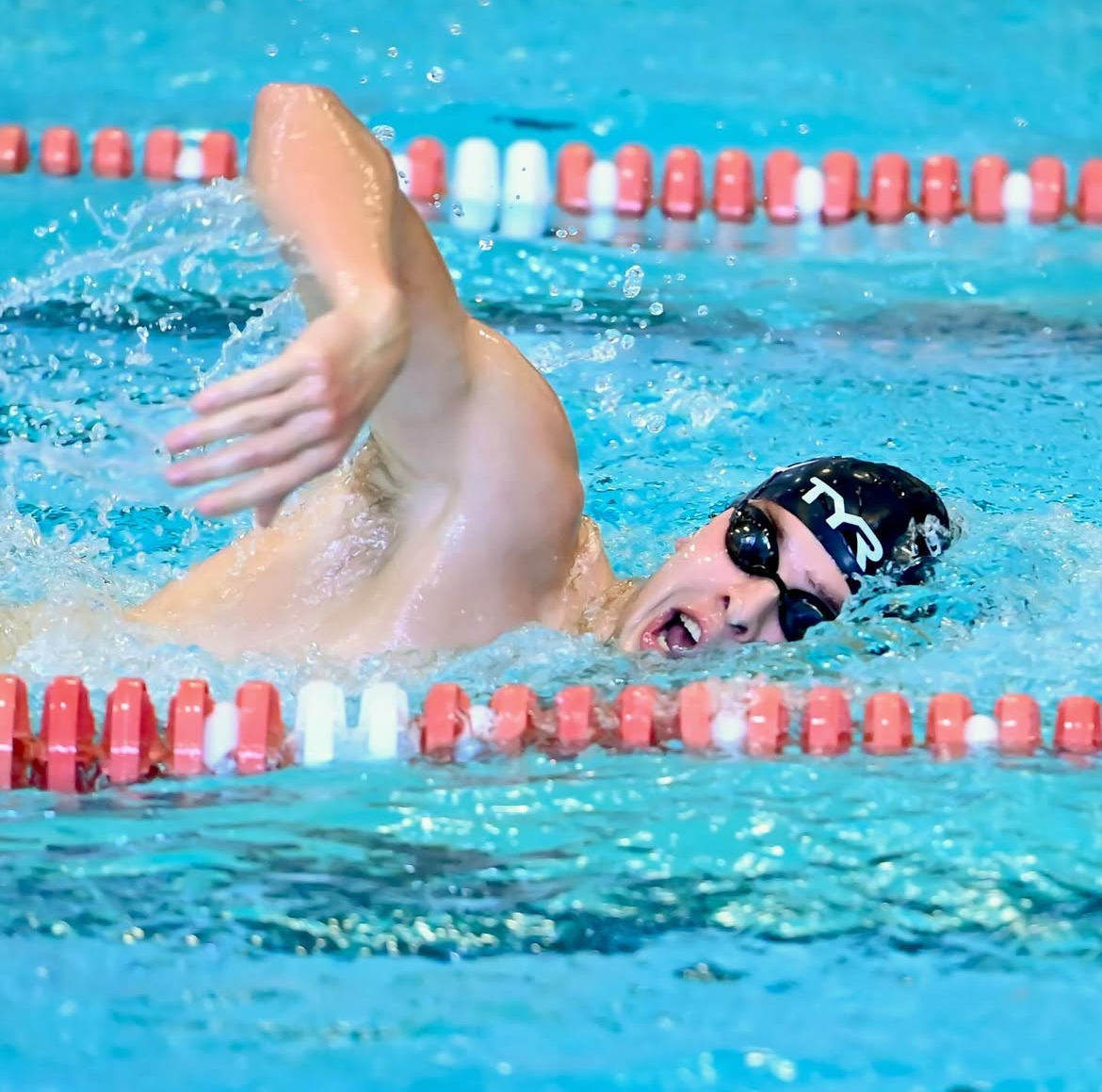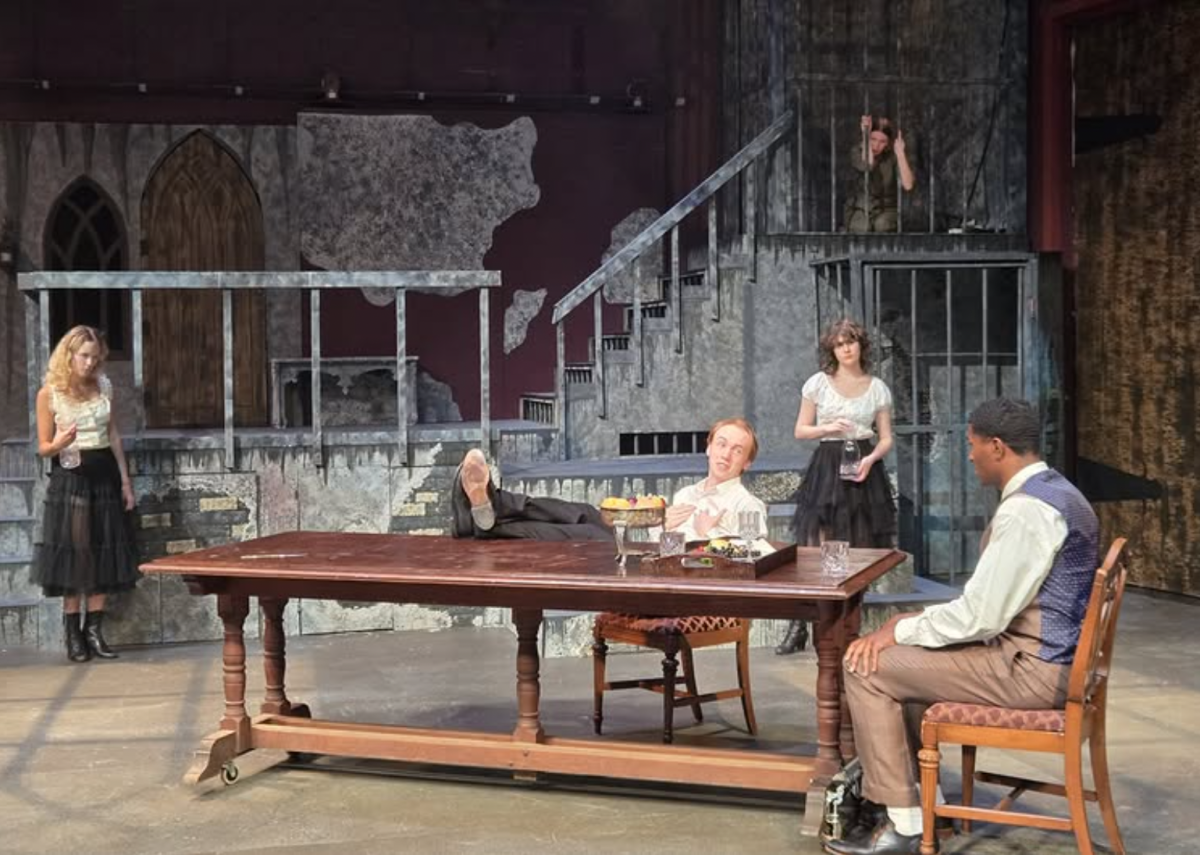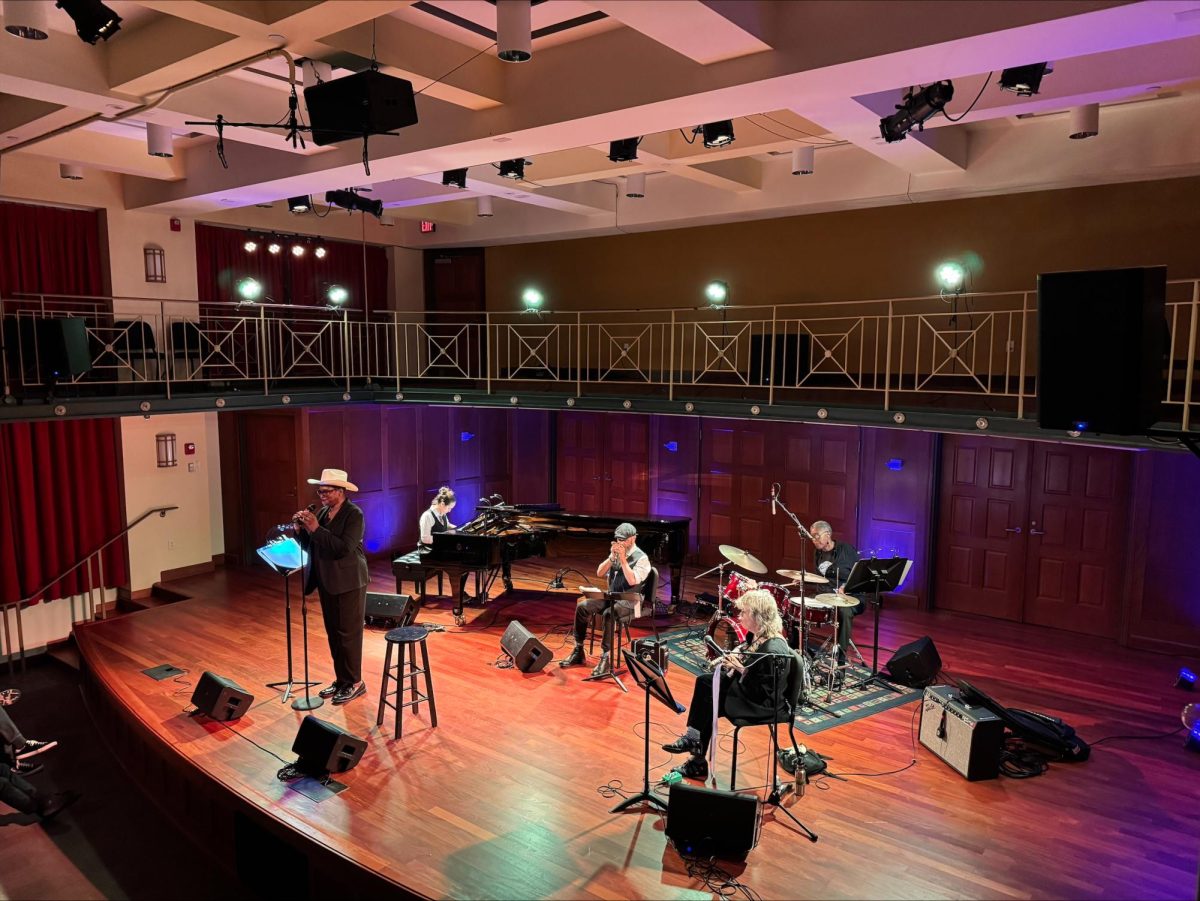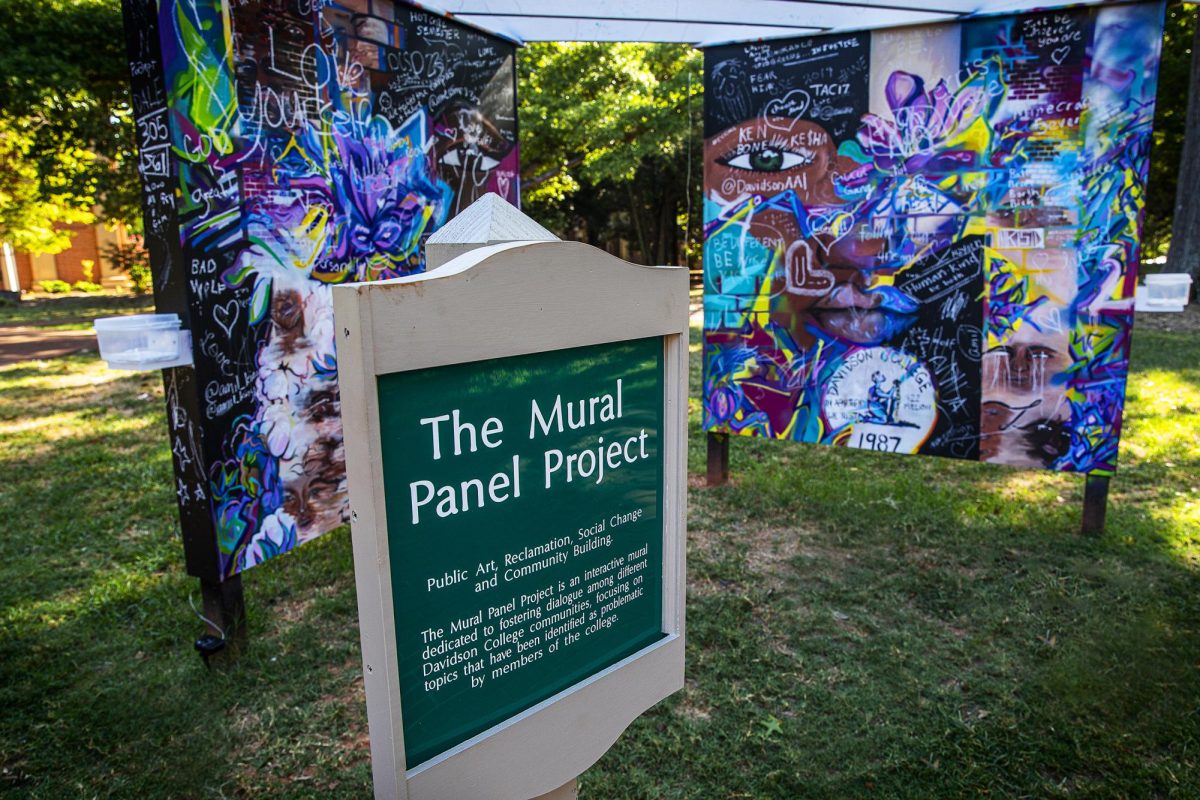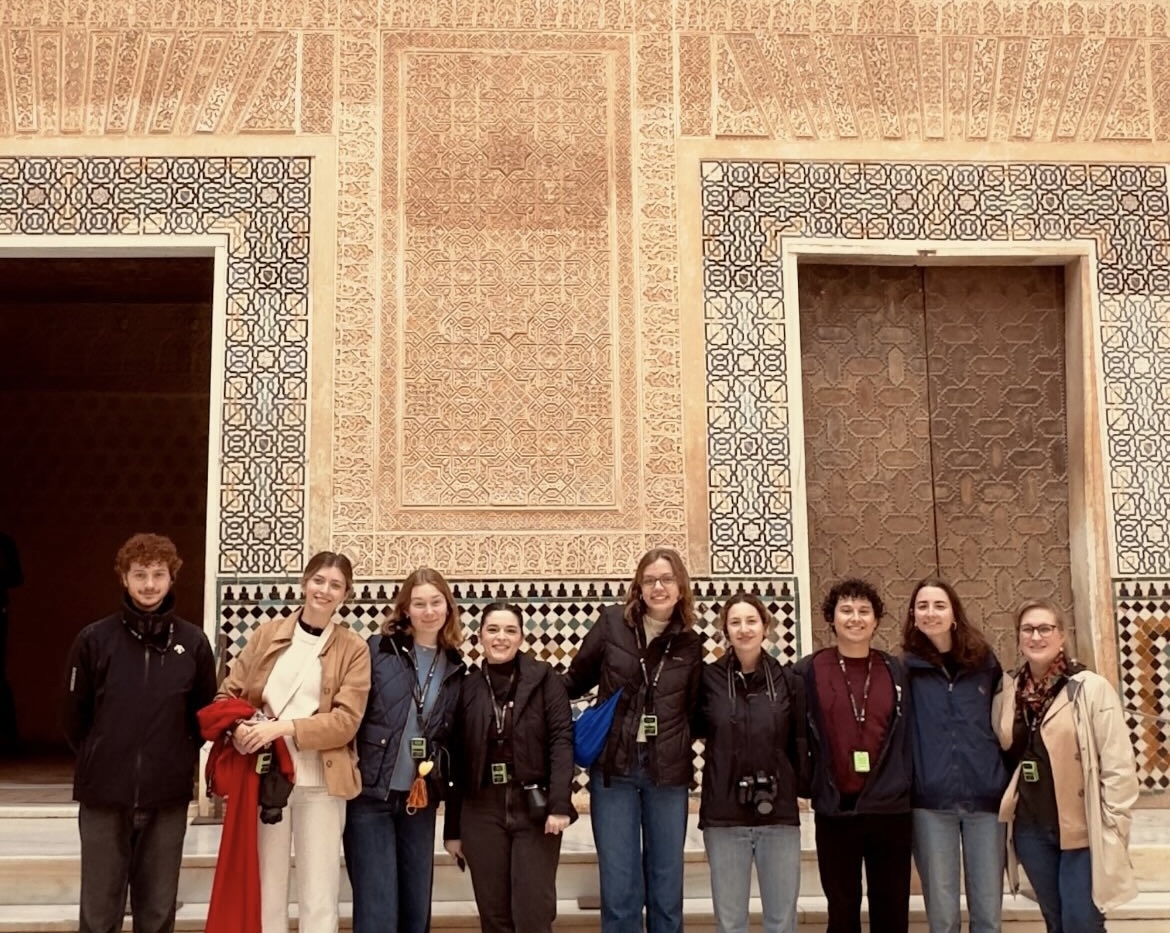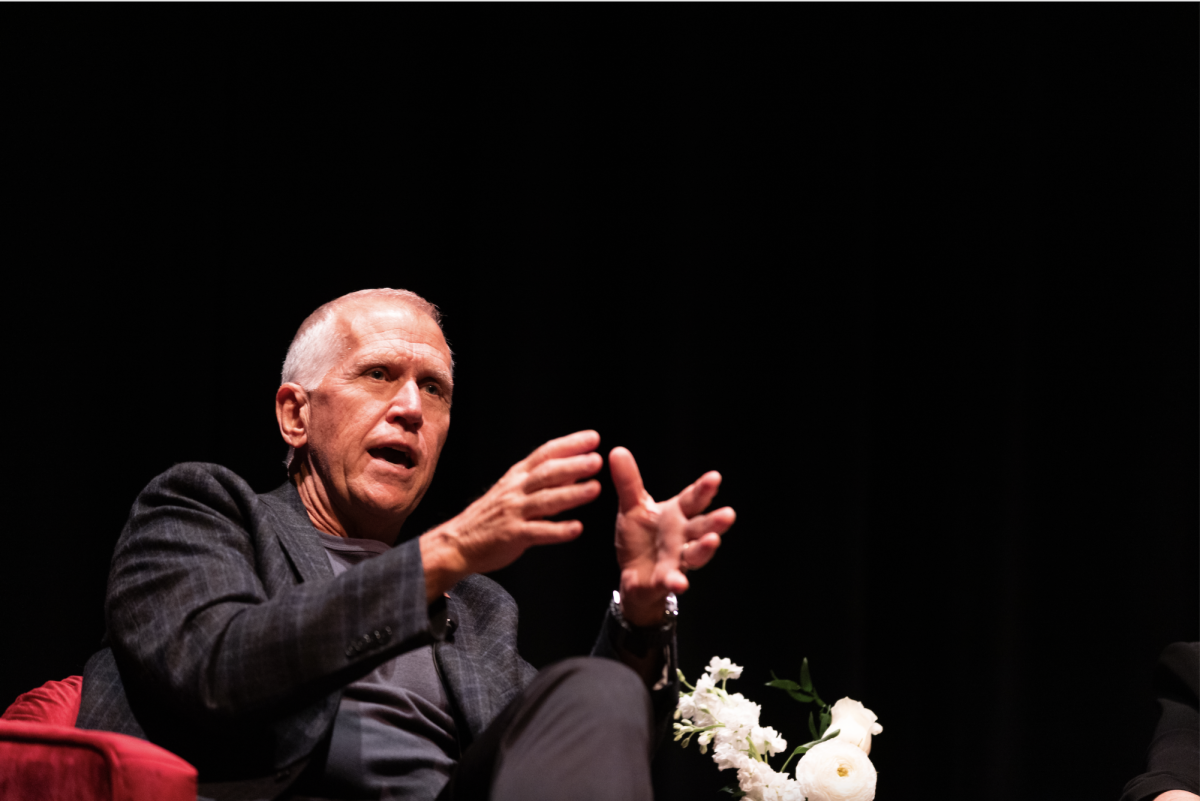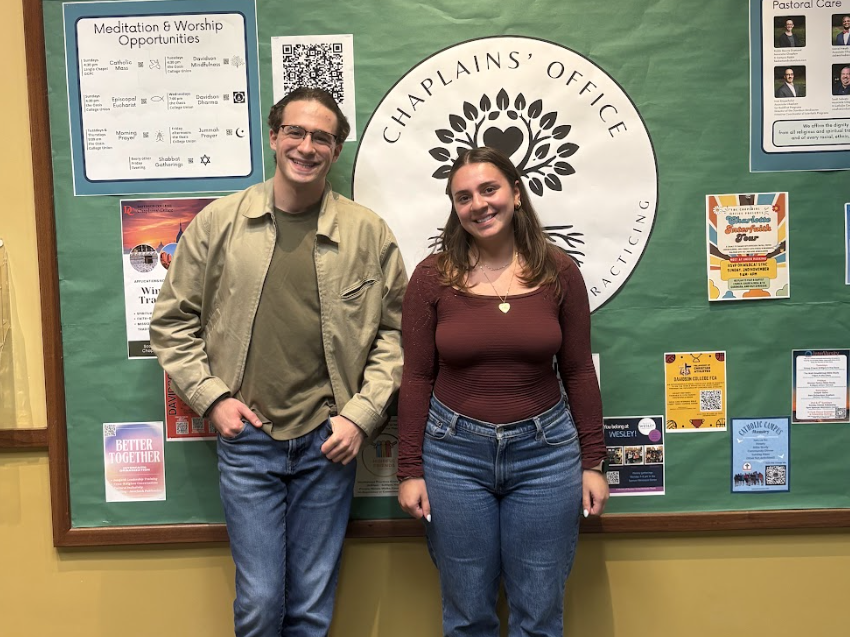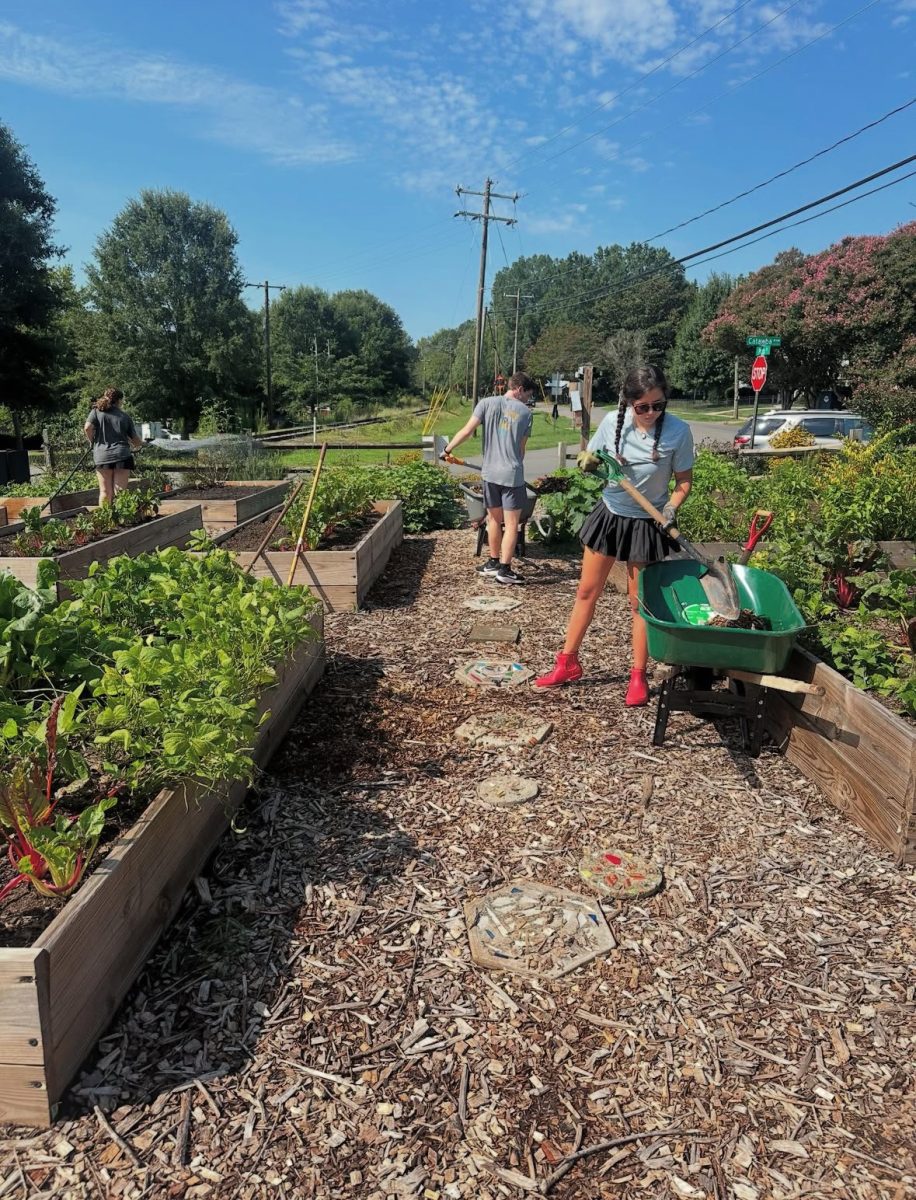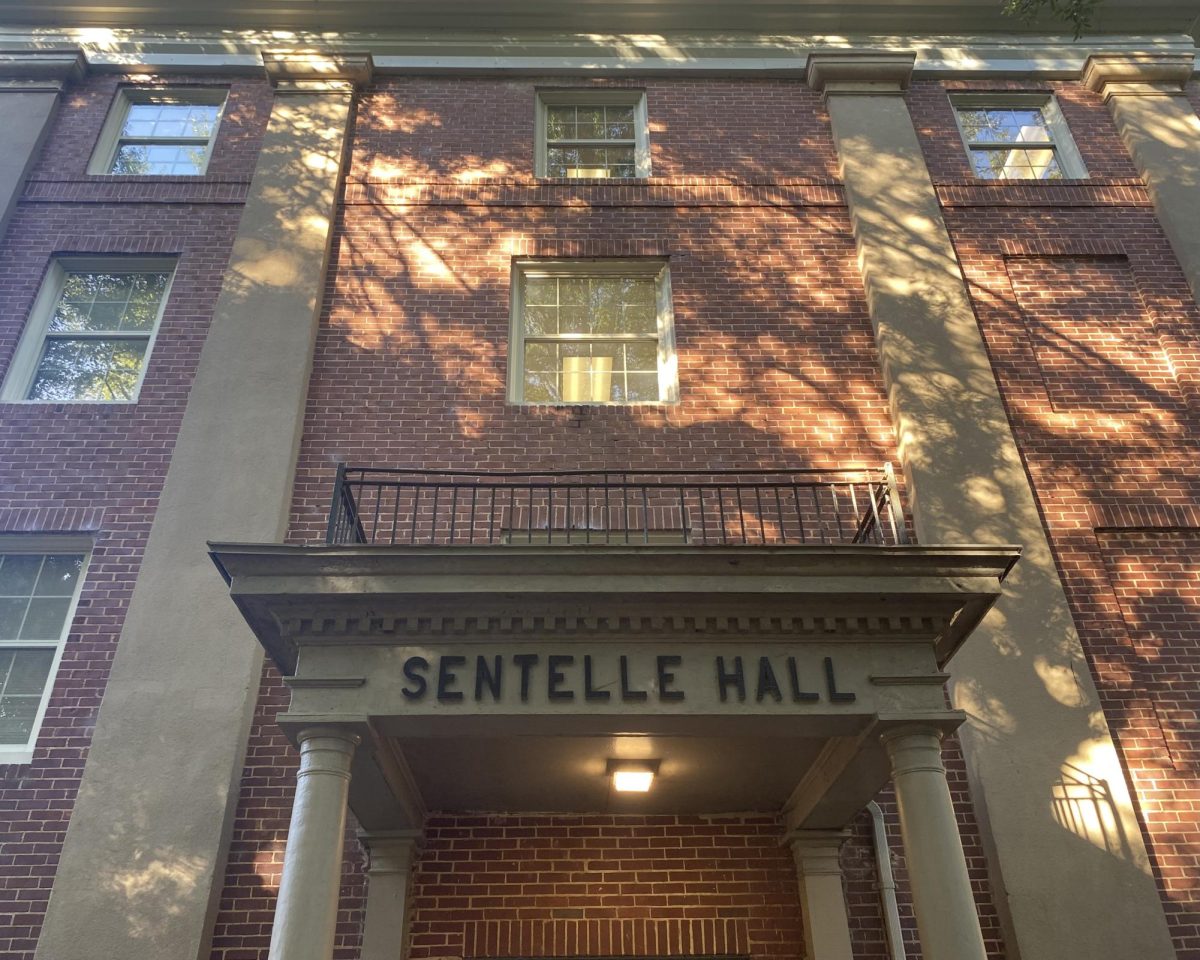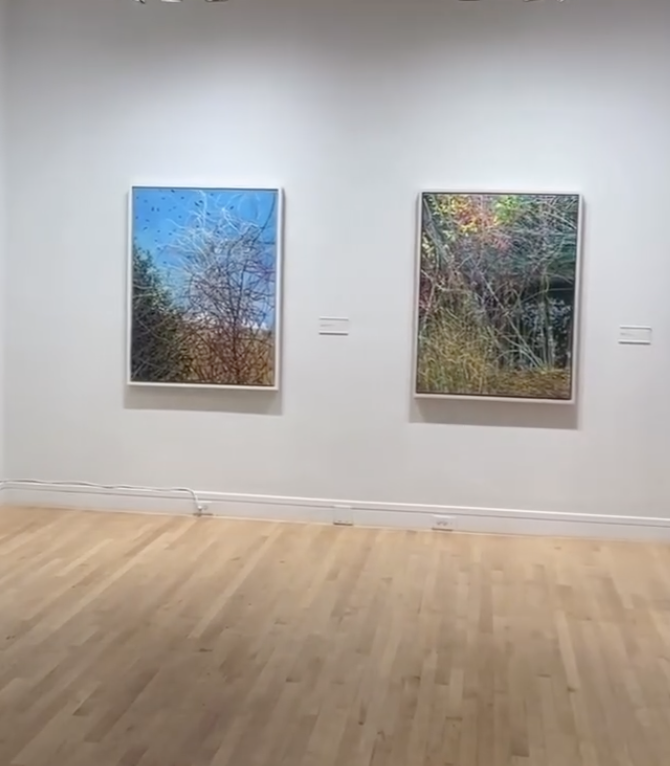Situated across the hall from Elizabeth Bradford’s solo exhibition, “Warp Weft Water Weeds,” is “Material and Imaginative Worlds: Landscapes from the Davidson College Collection,” curated by Student Galleries Intern Sarah Willoughby ‘25. While originally tasked with creating an exhibition complimentary to Bradford’s using works already acquired by Davidson, Willoughby wanted to go above and beyond. Her curation provides a wonderful survey of art ranging from 18th and 19th century romanticized landscapes to more contemporary abstract works. She features vibrant artworks reminiscent of Bradford’s work alongside monochrome pieces, which still strike the viewer by drawing their eye to the rhythm and movement within the work itself. Even the physical placement of the art on the wall seems specifically tuned to the viewer. For anyone who steps foot into the exhibition space, one thing is clear: Willoughby’s magic is at hand.
Director and Curator of the Van Every/Smith Galleries Lia Newman, who entrusted Willoughby with this exhibition, had both high expectations and high praise for her work. “Having collaborated with Sarah for four years, I was confident she would bring dedication, curiosity and a fresh perspective to curating the exhibition […] it was wonderful to see her truly make it her own,” she expressed via email.
Other gallery attendees had similar praise for Willoughby’s curation of the exhibition. Mallory Kavanaugh ‘26 appreciated the wide arrange of landscapes included. “I really liked seeing the different styles and I think it really speaks to Sarah’s talent as a curator, just how she made it all seem so fluid.”
Similarly, Lia Dougherty ‘25 appreciated how Willoughby interrogated traditional explorations of landscape. “I really liked how Sarah expanded the definition of what we might consider a landscape in conjunction with Elizabeth Bradford’s landscape exhibition across the hall,” she said.
Willoughby agreed to take part in a brief interview about her work. The following interview transcript was lightly edited for clarity.
Q: Could you please give an introduction to yourself?
Willoughby: I’m Sarah Willoughby. I’m a senior art history major and religious studies minor from Greensboro, North Carolina.
Q: How did you get started working with the Galleries?
Willoughby: My freshman fall, I was looking for a work study job and found [it]—I did a little bit of art docent [trained volunteer for art museums] and was very involved in my studio art program in high school—so it seemed like a good fit. I got hired and I have been here ever since.
Q: What previous curatorial experience do you have?
Willoughby: If you’re an intern [for the Galleries], you can curate across campus in Cunningham, Wall and Chambers—those are normally student curated. But also, last summer I worked at the Asheville Art Museum. As a curatorial intern there, we made a big digital exhibition on a singular artist, Douglas Ellington. It was very different from this experience because it was me honing in on and researching one artist and making an exhibition from that versus this was so many different artists trying to pull something together.
I had curated for Cunningham twice. I did one freshman year that was called “Living Ghosts” in conjunction with the theatre department’s show “Drowning Girls.” We used double exposure photography because we thought the ghostly images tied in with the show and we used quotations from the actual show. My sophomore year, I curated another show in conjunction with Sarah Zhang [‘23], who graduated, called “Pious Performance.” It was about how different people perform their faith and how that’s captured. We have a lot of Roger Manleys [‘74, photographer] that explore religious performance in the American South and we also had indigenous artists [featured].
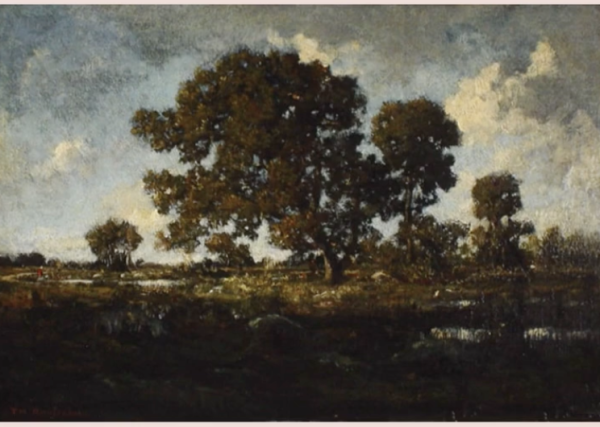
Q: What made you interested in curating this exhibition?
Willoughby: Lia [Newman] asked me to curate it. She knows I’m really interested in curating and that’s what I hope to do as a future career. She has just been really great [at] giving me opportunities to do that and to have stuff on my resume. I was really excited when I saw this with Bradford because her work is very vibrant […] even though hers are landscapes, it still kind of challenges what a landscape is in a way because they’re so zoomed in, it’s very up close and personal [and] she talks a lot about how it feels like you’re in that bush, so it was inspiring to make a landscape show off of [that].
I think my first instinct was that landscapes are kind of boring. […] But then through researching different artists and Lia encouraging me to not just do works like the Barbizons [19th century landscape paintings] […] [she encouraged] me to look outside of what [was] picked as landscape works. So Kate WalkingStick [Cherokee landscape painter] and Katie’s [St. Clair, Assistant Professor of Art] piece challenged that and I was interested in how I saw landscape more as a medium after that.
Q: What do you want viewers to take away from the exhibition?
Willoughby: I really want people to think, ‘Who is included and excluded from these spaces?’ I think that’s really important. I know a lot of artists talk about this. Barbizon works were seen as the height of the landscape, but who was left out of that narrative? Also, in light of environmental issues, no landscape is devoid of humans, there’s human impact everywhere. I think it’s interesting to think [about] who’s touched the landscape and who might be left out of things. I want you to question that when you look at landscapes moving forward.
Q: Do you have a dream show or exhibition that you would like to do?
Willoughby: I’m writing my thesis on folk art; more specifically, Southern folk art, so I’m interested in that genre as a whole, but I’m also interested in textiles, so maybe a folk art textile show, like quilts. I love Gee’s Bend Quiltmakers [African American female quilters from Gee’s Bend, Alabama]. I also love more contemporary artists like Diedrick Brackens and Sarah-Joy Ford. They use the ancestry of quilts to make new things. I think there is a lot going on with quilts right now in the art world, but bringing together the old folk art aspect with the contemporary world would be interesting.
Willoughby’s curation will be on view in the Edward M. Smith Gallery located inside the Katherine and Tom Belk Visual Arts Center until Saturday, March 8. Those unable to visit the Galleries in person can view Willoughby’s exhibition virtually through the Galleries’ Matterport site.
Skylar Linker ‘25 is a sociology major from Dallas, TX and can be reached for comment at [email protected].

